
Dr. Tsung-Yuan Tsai received his M.S. and Ph.D. degrees from the Institute of Biomedical Engineering of National Taiwan University in 2004 and 2010. Dr. Tsai won a talent-student-study-abroad scholarship to work with Professor Andrew Amis in Imperial College London in U.K. in 2008. Dr. Tsai was a research fellow/instructor, working with Professor Guoan Li, at the Bioengineering Laboratory in Harvard Medical School, Massachusetts General Hospital in Boston, U.S.A. from 2011 to 2016. He joined the School of Biomedical Engineering of Shanghai Jiao Tong University as the Professor of Special Appointment in 2016. He also currently serves as the Principle Scientist in the Medical 3D Printing Center at Shanghai Ninth People‘s Hospital, Medical School of Shanghai Jiao Tong University. His research interests span Imaging Biomechanics, Orthopaedic Engineering, Sports Science, Motion Analysis, and Computational Biomechanics. Dr. Tsai has published more than 50 peer-reviewed journal articles and 130 professional conference papers. He is the co-author of 2 book chapters, including The Hip Kinematics in “Adult Hip”, and Applications Using MATLAB in “Introduction to Finite Element Analysis”. He is Active Member of Orthopaedic Research Society of the US. He is an invited reviewer for 12 Science Citation Index journals.
Email: tytsai@sjtu.edu.cn
Research interests:
1. To tackle clinical issues and evaluate in-vivo/in-vitro functional performance of the human neuromusculoskeletal system using computational biomechanics, medical imaging methods, optical stereophotogrammetry, magnetic tracking techniques, and the inertial measurement unit.
2. To design innovative medical devices using additive or subtractive Manufacturing (3D Printing or Computer Numerical Control) for unmet clinical needs in Orthopaedics, Physical Therapy, Occupational Therapy, Rehabilitation, Sports Medicine and etc.
Selected publications:
1. T.-Y. Tsai, D. Dimitriou, M.H. Liow, H. Rubash, G. Li, Y.-M. Kwon*. 3D Imaging Analysis of Unicompartmental Knee Arthroplasty Evaluated in Standing Position: Component Alignment and In-Vivo Articular Contact. The Journal of Arthroplasty, 2016, 31(5), 1096-1101.
2. T.-Y. Tsai, D. Dimitriou, A. Hosseini, G. Li, Y.-M. Kwon*. Assessment of Accuracy and Precision of 3D Reconstruction of Unicompartmental Knee Arthroplasty in Upright Position Using Biplanar Radiography, Medical Engineering and Physics, 2016 Jul; 38(7):633-8.
3. T.-Y. Tsai, J.-S. Li, D. Dimitriou, G. Li, Y.-M Kwon*. Does Haptic-Robot Assisted Total Hip Arthroplasty Better Restore Native Hip Acetabular and Femoral Anatomy? The International Journal of Medical Robotics and Computer Assisted Surgery, 2016 Jun; 12(2):288-95.
4. T.-Y. Tsai, J.-S. Li, D. Dimitriou, Y.-M Kwon*. Does Component Alignment Affect Gait Symmetry in Unilateral Total Hip Arthroplasty Patients? Clinical Biomechanics, 2015, Oct; 30(8): 802-7.
5. T.-Y. Tsai, D. Dimitriou, J.-S. Li, K. W. Nam, G. Li*, Y.-M. Kwon. Asymmetric Hip Kinematics during Gait in Unilateral Total Hip Arthroplasty Patient, J Biomechanics, 2015, Feb 26; 48(4):555-9.

Dr. Guofeng Shen, special research scientist, doctoral supervisor. Got PhD. in Instrument Science and Technology Departmrnt of Harbin Institute of Technology in 2004 and work as a postdoctor in BME department of Shanghai Jiao Tong University from 2004 to 2006. Finished postdoctor research work and appointed as a associate professor in 2006. Appointed as a visiting associate professor in Foucused Ultrasound Lab of Hardvard Medcial School, Harvard University since 2011-2012. Appointed as a special research scientist and doctoral supervisor in 2014. The chairman of program committee of ISTU 2013 Conference, the member of Instrument Committee of Chinese Society of Ultrasound Medical Engineering, the member of Youth Committee of Chinese Society of BME. Peer reviewer of Applied Acoustic and some other international professional journals. Hosted more than 20 projects, published over 70 papers, authorized 11 patents and 3 software copyrights. Won the 1st Shanghai Science and Technology Progress Award and 3rd Chinese Medical Committee Science and Technoloogy Progress Award. The main research include intelligence instrument, physical theatment technology and MR guided phased focused ultrasound technology. The first MR-PHIFU system was successfully developed and certificated by the Chinese authority inspection agency.
Email: shenguofeng@sjtu.edu.cn
Phone: +86-21-62933209-605
Research interests:
(1) Intelligent biomedical instrumentation and advanced physical therapeutic methods for tumor therapy
Biomedical ultrasound therapy
Radiofrequency therapy
Perfusion thermo-chemotherapy
Ultrasound local thermo-chemotherapy
(2) MRI guided Phased High Intensity Focused Ultrasound(PHIFU) System for tumor therapy
Simulation of ultrasound and thermal field
Treatment plan
Design of ultrasonic transducer and amplifier
Image orientation and guidance
Non invasive temperature measurement
Animal and clinical trials
Technology on PHIFU device
Selected publications:
(1) Wu, Hao,Shen, Guofeng(*),Chen, Yazhu,Feasibility of an electromagnetic compatibility method for MRgFUS using a wire mesh screen,Ultrasonics,2016.12.01,72:15~23
(2) Yu, Ying,Shen, Guofeng(*),Zhou, Yufeng,Bai, Jingfeng,Chen, Yazhu,Quantitative Assessment of Acoustic Intensity in the Focused Ultrasound Field Using Hydrophone and Infrared Imaging,Ultrasound in Medicine and Biology,2013.11.01,39(11):2021~2033
(3) Li, Dehui,Shen, Guofeng(*),Bai, Jingfeng,Chen, Yazhu,Focus Shift and Phase Correction in Soft Tissues During Focused Ultrasound Surgery,IEEE Transactions on Biomedical Engineering,2011.6.01,58(6):1621~1628
(4) Qiao, Shan,Shen, Guofeng(*),Bai, Jingfeng,Chen, Yazhu,Transcostal high-intensity focused ultrasound treatment using phased array with geometric correction,Journal of the Acoustical Society of America,2013.8.01,134(2):1503~1514
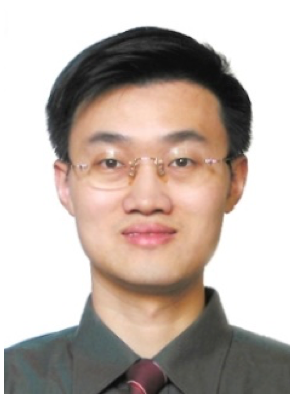
Dr. Yao Chen received the B.S. degree in 1996 in physiology and biophysics from Peking University, Beijing, China, and the Ph.D. degree in 2001 in biophysics from Institute of Biophysics, Chinese Academy of Sciences, Beijing, China. From 2001 to 2009, he worked at Mount Sinai School of Medicine and SUNY – College of Optometry in New York City for his post-doctoral training. He studied neuronal mechanism of visual attention by training monkeys doing attention tasks in different difficulties, and recording neuronal activity in visual cortex with chronically implanted micro-electrode array. His result was reported as a cover story in Nature Neuroscience. In 2010, he became a Professor of Special Appointment in Shanghai Jiao Tong University continuing his research in cognitive neuroscience and brain-machine interface. Then he was promoted to be a tenured professor in 2016. Dr. Chen has been involved in a number of research projects from the Chinese National Natural Science Foundation and has authored or coauthored 27 referred papers, 1 book chapter, and 1 patent.
Email: yao.chen@sjtu.edu.cn
Phone: +86-21-34204076
Research interests:
(1) Neuronal mechanism of brain cognition functions, such as visual attention, learning and memory.
(2) Neural information processing in biomedical engineering, including retinal prosthesis and brain-machine interface.
(3) Fundamental principles of how the brain executes actions for related neurological and psychiatric diseases.
Selected publications:
(1) Huang, D.; Xue, L.Y.; Wang, X.; Chen, Y.*; Using spatial uncertainty to manipulate the size of the attention focus. Scientific Reports. 2016, 6, 32364.
(2) Ma, Z.G.; Cao, P.J.; Sun, P.C.; Zhao, L.N.; Li, L.M.; Tong, S.B.; Lu, Y.L.; Yan, Y.; Chen, Y.*#; Chai, X.Y.#; Inverted optical intrinsic response accompanied by decreased cerebral blood flow are related to both neuronal inhibition and excitation. Scientific Reports. 2016; 6: 21627. (#:co-corresponding authors)
(3) Wang, M.J.; Wang, X.H.; Xue, L.Y.; Huang, D.; Chen, Y.*; Visual attention modulates the asymmetric influence of each cerebral hemisphere on spatial perception. Scientific Reports, 2016, 6, 19190.
(4) Li, X.*#; Chen, Y.*#; Lashgari, R.; Bereshpolova, Y.; Swadlow, H.A.; Lee, B.B.; Alonso, J.-M.; Mixing of chromatic and luminance retinal signals in primate area V1. Cerebral Cortex. 2015, 25(7): 1920-1937. (#: equal contribution)
(5) Chen, Y.*; Martinez-Conde, S.; Macknik, S.L.; Bereshpolova, Y.; Swadlow H.A.; Alonso, J.-M.; Task difficulty modulates the activity of specific neuronal populations in primary visual cortex. Nature Neuroscience, 2008, 11, 974-982. (Cover paper of this issue and previewed by Dr. John H. Reynolds in the same issue, pages 861-862)

Dr. Xianting Ding is professor at School of
Biomedical Engineering, deputy director of Institute for Personalized Medicine,
Shanghai Jiao Tong University. He is elected into the Chinese Top Elite
Researcher Program, Qiushi Foundation Elite Young Investigator, Southern
California Scientist and Engineering Association Elite Young Researcher. He
received his Ph.D. degree from Department of Mechanical Engineering at
University of California, Los Angeles (UCLA). His research interests focus on single
cell protein analysis with trace clinical specimens. The technique developed in
his lab includes: 1) mass cytometry (also named, CyTOF) technique for
single-cell analysis; 2) tissue topology mass spectrometry (in situ single-cell
multiplex protein analysis on tissue specimens); 3) portable bio-sensors with
microfluidics, bio-electrocchemistry, hydrogel and surface modification skills
for point-of care technologies(POCT). He participated in the early
investigation and development for 3 multi-million-USD international research
centers. He is on the editorial board member for Scientific
Reports and SLAS Technology (JALA), the reviewer for 20 SCI journals,
published 90 peer reviewed SCI papers and filed 30 national or international
patents.
Email: dingxianting@sjtu.edu.cn
Phone: +86-21-62932274
Research interests:
(1) Single-cell mass cytometry (also named, CyTOF) technique for single-cell multiplexed protein analysis. We are developing CyTOF platform that allows accurate measuring of various molecular species on single cells in a highly multiplexed fashion.
(2) Tissue in situ high through mass spectrum imaging that enables cellular and molecularly specific omics for multiplexed protein and RNA analysis without the need to digest the tissue into suspended single cells.
(3) Single-cell Western blot technique that allows quantification of 7~10 protein expressions on a single cell using Western blot setup.
(4) Portable bio-sensors for disease diagnosis with microfluidics, bio-electrocchemistry, hydrogel and surface modification skills for point-of care technologies (POCT). The applications include circulating tumor cell (CTC) separation, portable PCR platform, single-exosome analysis, etc.
Selected publications:
(1) Xianting Ding*, Zach Njus, Taejoon Kong, Wenqiong Su, Chih-Ming Ho and Santosh Pandey*, Effective drug combination for Caenorhabditis elegans nematodes discovered by output-driven feedback system control technique, Science Advances, 2017,3(10):eaao1254.
(2) Antony Warden#, Wenjia Liu, Huixing Chen, Xianting Ding*, Portable Infrared Isothermal PCR platform for multiple STD strand detection,Analytical Chemistry, 2018, 90(20):11760-11763.
(3) Aynur Abdulla#, Wenjia Liu, Azarmidokht Gholamipour-Shirazi, Jiahui Sun, Xianting Ding*, High-throughput Isolation of Circulating Tumor Cells Using Cascaded Inertial Focusing Microfluidic Channel, Analytical Chemistry, 2018, 90(7):4397-4405.
(4) Shuopeng Liu#,Wenqiong Su, Yulong Li, Lulu Zhang and Xianting Ding*, Manufacturing of an electrochemical biosensing platform based on hybrid DNA hydrogel: Taking lung cancer-specific miR-21 as an example, Biosensors and Bioelectronics, 2018, 103:1-5.
(5) Yuting Yang#, Guangxia Shen, Hui Wang, Hongxia Li, Ting Zhang, Nongjian Tao, Xianting Ding*, Hui Yu*, Interferometric Plasmonic Imaging and Detection of Single Exosomes, Proceedings of the National Academy of Sciences (PNAS), 2018, 115 (41) 10275-10280.

Dr. Yiping Du received the Ph.D. degree in physics in 1995 at the University of Utah, USA. He was a scientist at the Applied Science Lab at General Electric Company from 1995 to 1999. He was a faculty member in radiology at the University of Chicago from 2000-2002. He joined the University of Colorado School of Medicine as an associate professor in psychiatry and radiology and technical director of the Brain Imaging Center in 2002. He was promoted to professor in 2009. He joined the College of Biomedical Engineering at Zhejiang University as a full-time professor, endowed by the “1000 talent” program during 2010-2015. He is now the director of the Institute for Medical Imaging Technology and Zhiyuan chair professor at the School of Biomedical Engineering, Shanghai Jiao Tong University. He is now a deputy editor of Magnetic Resonance in Medicine and a senior member of IEEE-EMBS. He served as the president of the Overseas Chinese Society of Magnetic Resonance in Medicine (2014-2015). He is a recipient of Stauffer Award from the Associate of the University Radiologists in USA.
Email: yipingdu@sjtu.edu.cn
Research interests:
(1) Quantitative magnetic resonance imaging (MRI), molecular imaging, PET-MR, novel acquisition techniques of MRI, pulse sequence design, clinical applications of MRI.
(2) Design and fabrication of RF and gradient coils, design of low-field MR systems.
Selected publications:
(1) Ye H, Ma D, Jiang Y, Cauley SF, Du YP, Wald LL, Griswold MA, Setsompop K. Accelerating magnetic resonance fingerprinting (MRF) using t-blipped simultaneous multislice (SMS) acquisition. Magn Reson Med. 2016;75:2078-85.
(2) Du YP, Chu R, Tregellas JR, Enhancing the Detection of BOLD Signal in fMRI by Reducing Partial Volume Effect, Computational and Mathematical Methods in Medicine, 2014;2014, Article ID 973972,
(3) Hwang D, Kim D, Du YP. In vivo multislice mapping of myelin water content using T2* decay. NeuroImage, 2010;52:198-204.
(4) Du YP, Jin Z, Robust tissue-air volume segmentation of MR images based on the statistics of phase and magnitude: Its applications in the display of susceptibility weighted imaging of the brain, J Magn Reson Imaging. 2009;30:722-731.
(5) Du YP, Jin Z, Hu Y, Tanabe J. Multi-echo MR angiography and venography in the brain at 3T, J Magn Reson Imaging. 2009;30:449-454.
(6) Hwang D, Du YP, Improved myelin water quantification using spatially regularized nonnegative least squares algorithm. J Magn Reson Imaging. 2009;30:203-208.
(7) Jin Z, Xia L, Du YP. Reduction of Artifacts in Susceptibility Weighted MR Venography of the Brain. J Magn Reson Imaging. 2008;28:327-33.
(8) Du YP, Jin Z. Simultaneous acquisition of MR angiography and venography (MRAV). Magn Reson Med. 2008;59:954-8.
(9) Du YP, Chu R, Hwang D, Brown MS, Kleinschmidt-DeMasters BK, Singel D, Simon JH. Fast multislice mapping of the myelin water fraction using multicompartment analysis of T2* Decay at 3T – A preliminary postmortem study. Magn Reson Med. 2007;58:865-70.

Dr. Yuan Feng earned a B.S. degree in Thermo Energy and Power Engineering in 2006 and an M.S. degree in Mechatronics in 2008, both from Harbin Institute of Technology in China. In 2008, he earned a Ph.D. degree in Mechanical Engineering from Washington University in St. Louis with Dr. Philip Bayly. His postdoctoral training was at Washington University School of Medicine with Dr. Yanle Hu in 2013, and at the University of Texas at Austin with Dr. Michael Sacks in 2014. He was a faculty member at Soochow University from late 2014 to 2017. Since 2018 he moved to Shanghai Jiao Tong University and joined the School of Biomedical Engineering. His research interests are MR image-guided neuro-intervention, MR elastography, and traumatic brain injury (TBI). He is a licensed professional engineer in the State of Missouri and a member of ASME, AAPM, and NSPE. He has authored or coauthored 22 referred papers, 1 book, and 10 patents.
Email: fengyuan@sjtu.edu.cn
Phone: +86-18625085336
Website: https://fylab.weebly.com/
Research interests:
(1) MR sequence development and image reconstruction for MR interventional imaging in brain. MR image-guided interventional device development.
(2) MR image-based tissue characterization and modeling, application of MR elastography and tagging in brain.
(3) Traumatic brain injury.
Selected publications:
1. Shengyuan Ma#, Mo Zhu#, Xiaolong Xia#, Liang Guo, Guy M. Genin, Michael S. Sacks, Mingyuan Gao, Sasa Mutic, Yanle Hu*, Chun-hong Hu*, Yuan Feng*, “A preliminary study of the local biomechanical environment of liver tumors in vivo”. Medical physics. 2019;46(4):1728-39.
2. Y. Feng*, F. Dong, X. Xia, C. H. Hu, Q. Fan, Y. Hu, M. Gao and S. Mutic. An adaptive Fuzzy C-means method utilizing neighboring information for breast tumor segmentation in ultrasound images. Med Phys 44: 3752-3760, 2017.
3. Y. Feng*, Y. Gao, T. Wang, L. Tao, S. Qiu and X. Zhao. A longitudinal study of the mechanical properties of injured brain tissue in a mouse model. Journal of the Mechanical Behavior of Biomedical Materials 71: 407-415, 2017.
4. Y. Feng*, C.-H. Lee, L. Sun, S. Ji and X. Zhao. Characterizing white matter tissue in large strain via asymmetric indentation and inverse finite element modeling. Journal of the Mechanical Behavior of Biomedical Materials 65: 490-501, 2017.
5. Y. Feng, I. Kawrakow, J. Olsen, P. J. Parikh, C. Noel, O. Wooten, D. S. Du, S. Mutic and Y. L. Hu. A comparative study of automatic image segmentation algorithms for target tracking in MR-IGRT. Journal of Applied Clinical Medical Physics 17: 441-460, 2016.
6. Y. Feng, T. M. Abney, R. J. Okamoto, R. B. Pless, G. M. Genin and P. V. Bayly. Relative brain displacement and deformation during constrained mild frontal head impact. J R Soc Interface 7: 1677-1688, 2010.
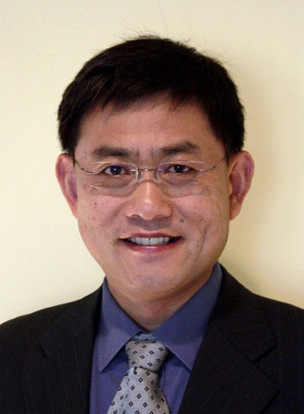
Prof. Wei-Qiang Gao received his Ph.D. from Columbia University in 1989 and did his post-doctoral research at Columbia University and the Rockefeller University. From 1993-2010. He had been a Scientist, and Senior Scientist and Group at Genentech, Inc.. Dr. Gao has made important contributions to the fields of tumorigenesis, stem cells and neuroscience. In early 1990’s, he made important contributions to the mechanisms of cerebellar granule neuronal differentiation. His group then pioneered research on development and regeneration of inner ear hair cells at Genentech and changed the traditional view that mammalian inner ear hair cells cannot regenerate. He was invited to speak at the Nobel Conference “To Restore Hearing” organized by the Karolinska Institute in Sweden in 2002. More recently, his group worked on “cancer research and cancer stem cells” and “stem cells and tissue regeneration” and published a paper in Nature in 2008 to report for the first time that a single adult stem cell is capable of generating a functional prostate organ. Dr. Gao has published 80 papers as either corresponding or the first author, including Nature, Cell, Science, Neuron, Nature Neuroscience, Nature Communications, Gastroenterology, PNAS, etc. and has been granted 48 US patents. He is a scholar of national “Thousand-Talents Program”, and the Chief Scientist of two program projects from the Ministry of Science and Technology of China and 2 Key grants from the National Natural Science Foundation of China. He has served as a reviewer for grant proposals of Wellcome Trust in UK, NIH in US, and NSFC and 35 journals including Nature, Nature Medicine, Nature Cell Biology, Nature Communications, Cancer Cells, PNAS, etc..
Email: gao.weiqiang@sjtu.edu.cn
Phone: +86-15821126637
Research interests:
1. Tumorigenesis and therapeutic resistance
2. Stem cells and tissue repair
3. Cochlear hair cell regeneration
Selected publications:
1. Chen Q, Quan Y, Wang N, Xie C, Ji Z, He H, Chai R, Li H, Yin S, Chin YE, Wei X, Gao WQ.Inactivation of STAT3 Signaling Impairs Hair Cell Differentiation in the Developing Mouse Cochlea. Stem Cell Reports. 2017 Jul 11;9(1):231-246.
2. Zhang K, Guo Y, Wang X, Zhao H, Ji Z, Cheng C, Li L, Fang Y, Xu D, Zhu HH, Gao WQ. WNT/β-Catenin Directs Self-Renewal Symmetric Cell Division of hTERThigh Prostate Cancer Stem Cells. Cancer Res. 2017 May 1;77(9):2534-2547.
3. Zhang C, Ji Z, Wang M, Zhang W, Yang R, An H, Yang R, van Abel D, van Dijk M, Yang X, Ou G, Zhu HH, Gao W-Q. Stox 1 as a novel transcriptional suppressor of Math1 during cerebellar granule neurogenesis and medulloblastoma formation. Cell Death and Differentiation, 2016 Dec;23(12):2042-2053.
4. Zhang K, Zhao H, Ji Z, Zhang C, Zhou P, Wang L, Chen Q, Wang J, Zhang P, Chen Z, Zhu HH and Gao W-Q .Shp2 promotes metastasis of prostate cancer by attenuating thePAR3/PAR6/aPKC polarity protein complex and enhancing epithelial-to-mesenchymal transition. Oncogene 2016, 35:1271-82.
5. Yang R, Wang M, Wang J, Huang X, Yang R, Gao WQ.Cell Division Mode Change Mediates the Regulation of Cerebellar Granule Neurogenesis Controlled by the Sonic Hedgehog Signaling. Stem Cell Reports. 2015 Nov 10;5(5):816-28.
6. Zhang Q, Qin J, Zhong L, Gong L, Zhang B, Zhang Y, Gao WQ.CCL5-mediated Th2 immune polarization promotes metastasis in luminal breast cancer. Cancer Res. 2015 Oct 15;75(20):4312-21.
7. Wang J, Zhu HH, Chu M, Liu Y, Zhang C, Liu G, Yang X, Yang R, Gao WQ. Symmetrical and asymmetrical division analysis provides evidence for a hierarchy of prostate epithelial cell lineages. Nature Communications. 2014 Aug 28;5:4758.
8. Li J, Tang YH, Wang YT, Tang RB, Jiang WF, Yang GY and Gao WQ. Neurovascular recovery via co-transplanted neural and vascular progenitors leads to improved functional restoration after ischemic stroke in rat. Stem Cell Reports. 2014 Jun 19;3(1):101-14.
9. Leong KG, Wang BE, Johnson L, Gao WQ. Generation of a prostate from a single adult stem cell. Nature. 2008 Dec 11;456(7223):804-8.
10. Zheng JL, Gao WQ. Overexpression of Math1 induces robust production of extra hair cells in postnatal rat inner ears. Nature Neuroscience. 2000 Jun;3(6):580-6.
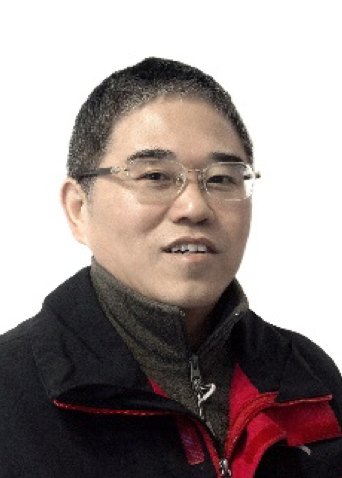
Prof. Hongchen Gu is the Associate Dean at School of Biomedical Engineering of Shanghai Jiao Tong University. He received his Ph.D. degree in Chemical Engineering in 1992 from East China University of Science and Technology. From 1994 to 1995, he joined Pennsylvania State University as a visiting professor. From 2008 until now, Dr. Gu served as the Director of Nano-biomedical Research Center at School of Biomedical Engineering.
Prof.Gu and his group have already industrialized a number of achievements to clinic application, including high sensitivity nucleic acid assay for blood screening and infectious disease. Dr. Gu has published more than 200 peer-review articles and applied for more than 30 patents. He has received several awards including the Second Prize of Shanghai Technology Invention Award (2013), and the Second Prize of Natural Science Award of Ministry of education (2015).
Email: hcgu@sjtu.edu.cn
Phone: +86-21-62932904
Research interests:
(1) Controlled synthesis of nanomaterials, surface modification and its applications in biomedical science.
(2) Interactions of nanomaterials and bio-molecules.
(3) Nanomaterials for diagnostics and therapy technology.
Selected publications:
1) Ding Sheng-zi Zhang, Yang Jiang, Haiou Yang, Youjie Zhu, Shunjia Zhang, Ying Zhu,Dan Wei1, Ye Lin, PingPing Wang, Qihua Fu, Hong Xu*, Hongchen Gu*, Dual-Encoded Microbeads through a Host-Guest Structure: Enormous, Flexible and Accurate Barcodes for Multiplexed Assays, Advanced Functional Materials, 2016, 26, 6146-6157
2) Ying Zhu, Hong Xu, Kaimin Chen, Jianping Fu and Hongchen Gu*,Encoding through Host/Guest Structure: Construction of Multiplexed Fluorescent Beads,Chemical Communications,23/09/2014; 50(90),14041-14044
3) Yao Wang and Hongchen Gu*,Core–Shell-Type Magnetic Mesoporous Silica Nanocomposites for Bioimaging and Therapeutic Agent Delivery,Advanced Materials, 2015, 27(3):576-585 (Highly cited paper)
4) Li Lin, Hongchen Gu* and Jian Ye*,Plasmonic multi-shell nanomatryoshka particles as highly tunable SERS tags with built-in reporters,Chemical Communications,12th October 2015,51(100):17740-17743
5) Yijie Chen, Hongchen Gu*, Ding Sheng-Zi Zhang, Fan Li , Tengyuan Liu,Weiliang Xia*,Highly effective inhibition of lung cancer growth and metastasis by systemic delivery of siRNA via multimodal mesoporous silica-based nanocarrier,Biomaterials,December 2014 35(38),10058–10069
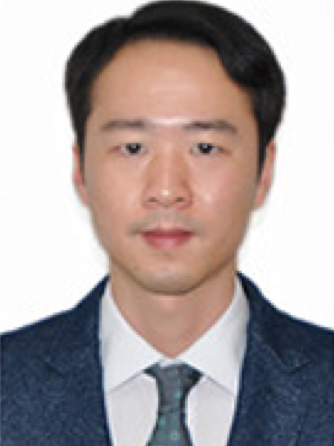
Dr. Bobo Gu received his Ph.D. degree in Optical Engineering from Zhejiang University in 2012. After postdoctoral training at the Nanyang Technological University, he joined Shanghai Jiao Tong University in 2017, where he is currently an Assistant Professor in the Department of Biomedical Engineering. His research focuses on the design and synthesis of functional inorganic and organic nanomaterials and exploration of their applications in sensing, imaging, and therapy. He has authored or coauthored 40 referred papers and 5 patents.
Email: bobogu@sjtu.edu.cn
Research interests:
(1) Photodynamic therapy (PDT): Utilize the optical nonlinearity of nanoparticals (e.g. second harmonic generation of ZnO NPs, multi-photon absorption of Aggregation-induced Emission (AIE) nanoparticles) to in situ trigger the PDT by the near-infrared light, enhancing the PDT efficiency and penetration depth.
(2) Bioimaging: Design and synthesize new resonance Raman probe with unprecedentedly high signal intensity and AIEgens with high multi-photon absorption cross-section for in vitro and in vivo imaging.
(3) Chemical and Biological sensing: Design and fabricate self-assemble nanofilm for chemical and biological sensing. Combining the advanced fiber sensor plate-form, the self-assemble nanofilm can perform functional sensing e.g. pH sensing, metal ion sensing, potassium ion sensing, etc.
Selected publications:
[1]. M. Liu#, Y. Liu#, B. Gu,* X. Wei, G. Xu,* X. Wang*, M. T. Swihart,* K. -T. Yong,* “Recent Advances in Copper Sulphide-Based Nanoheterostructures,” Chemical Society Reviews, 10.1039/C8CS00832A.
[2]. F. Yin#, B. Gu#, J. Li#, Y Liu, Z. Li, K. -T. Yong*, and B. Z. Tang*, “In vitro anticancer activity of AIEgens,” Biomaterials Science, Vol. 7, pp. 3855-3865, 2019.
[3]. M. -J. Yin, B. Gu*, Q. An, Y. L. Guan, K. -T. Yong*, "Recent development of fiber-optic chemical sensors and biosensors: mechanisms, materials, micro/nano-fabrications, and applications." Coordination Chemistry Reviews, Vol. 376, pp. 348-392, 2018.
[4]. B. Gu#, W. Wu#, G. Xu#, G. Feng, F. Yin, P. Chong, J. Qu*, K. -T. Yong*, and B. Liu*, “Precise two-photon photodynamic therapy using efficient photosensitizer with aggregation-induced emission characteristics,” Advanced Materials, Vol. 29, pp. 1701076, 2017.
[5]. B. Gu, A. Pliss, A. Kuzmin, A. Baev, T. Ohulchanskyy, J. Damasco, K. -T. Yong, S. Wen*, and P. N. Prasad*, “In-situ second harmonic generation by cancer cell targeting ZnO nanocrystals to effect photodynamic action in subcellular space,” Biomaterials, Vol. 104, pp. 78-86, 2016.
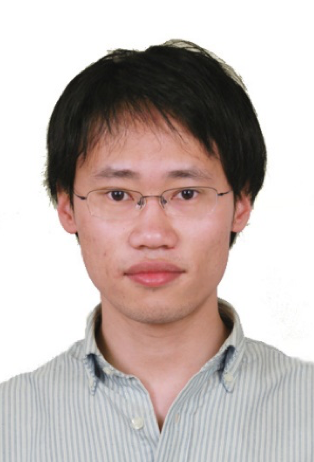
Dr. Hao He obtained the B.S. degree from the University of Science and Technology of China in 2006 and the PhD degree from the Chinese University of Hong Kong in 2010 respectively. From 2011 to 2014, he worked as an associate professor in the College of Precision Instrument and Optoelectronics Engineering in Tianjin University. Since 2014, he joined in the School of Biomedical Engineering in Shanghai Jiao Tong University as a tenure-tracked associate professor. His research focuses on optical modulation technology of Ca2+ signaling, novel microscopy systems, and in vivo applications of femtosecond laser in life science and clinic. He was awarded as the JSPS oversea fellowship by the University of Tokyo and invited as a member of ImPACT project supported by the Japan Cabinet office. He has published more than 30 SCI-indexed journal papers as the corresponding or first author, two on Nature Photonics, and two highlighted/focused by Nature Photonics. He has also published 3 book chapters and one book.
Email: haohe@sjtu.edu.cn
Research interests
1) Optical technology and mechanism of controlling Ca2+ store, channel, and signaling of cells
2) Microscopy and functional control of neural Ca2+ in vivo in brain
3) Optical control of stem-cell development, differentiation, and de-differentiation
4) Optical detection and modulation of development of tumor cells
Selected publications
[1] Wang, S., Liu, Y., Zhang, D., Chen, S.C., Kong, S.K., Hu, M., Cao, Y. and He, H*. Photoactivation of Extracellular-Signal-Regulated Kinase Signaling in Target Cells by Femtosecond Laser. Laser & Photonics Reviews. 12, 1700137. (2018) Cover story.
[2] Hao He, K Nakagawa, Y Wang, Y Hosokawa, K Goda. Mechanism for microtsunami-induced intercellular mechanosignalling. Nature Photonics 9, 623 (2015)
[3] YS Wang, Hao He*, S Li, B Lan, Y Cao, M Hu, C Wang. All-optical regulation of gene expression in targeted cells. Scientific Reports, 4, 5346 (2014).
[4] Hao He*, S Li, S Wang, M Hu, Y Cao, and C Wang. Manipulation of cellular light from green fluorescent protein by a femtosecond laser. Nature Photonics 6, 651-656 (2012)
[5] Y Hu, W Tang, P Cheng, Q Zhou, X Tian, H Wang, X Wei, and H He*. Monitoring circulating tumor cells in vivo by a confocal microscopy system. Cytometry Part A, 95(6), 657-663 (2019)
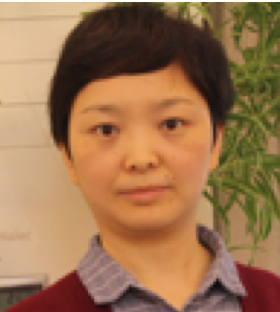
Qiu Huang received the B.S. and M.S. degrees in Automation Engineering from the University of Jiangsu, China, and the Ph.D. degree in Electrical Engineering from the University of Utah, Salt Lake City under the supervision of Prof. G. Larry Zeng. She then joined Prof. Grant Gullberg's group at the Lawrence Berkeley National Laboratory as a postdoctoral research fellow. Since July 2009, she has been with the School of Biomedical Engineering, Shanghai Jiao Tong University, and is now an Associate Research Professor. She is also an Adjunct research professor at the Department of Nuclear Medicine, Ruijin Hospital. She has been involved in a number of research projects and has authored or coauthored more than 50 scientific papers and 6 patents.
Email: qiuhuang@sjtu.edu.cn
Phone: +86-21-62933086
Research interests:
1. The inverse problems in Medical Imaging, including reconstruction algorithms (both analytical and iterative algorithms) for SPECT/PET/CT, Ultrasound vector tomography, and MRI diffusion tensor tomography.
2. Nuclear Medicine Imaging Instrumentation: SPECT system development, collimator design, PET system development
3. Medical Image Processing and Analysis: Kinetic modeling, statistical modeling, segmentation, registration
Selected publications:
1. Zan Y, Long Y, Chen K, Li B, Huang Q* and Gullberg GT. Design of a short non-uniform acquisition protocol for quantitative analysis in dynamic cardiac SPECT imaging – a retrospective 123I-MIBG animal study, Medical Physics, on press, 2017
2. Zhao Z, Huang Q*, Gong Z, Su Z, Moses W, Xu J* and Peng P*. A noval read-out electronics design based on 1-bit Sigma-Delta modulation, IEEE trans. Nucl. Sci., 2017, 64:820-828
3. Weng F, Bagchi S, Zan Y, Huang Q*, Seo Y*. An energy-optimized collimator design for a CZT-based SPECT camera. Nucl. Inst. and Methods in Physics Research, A. : Accelerators, Spectrometers, Detectors and Associated Equipment,2016,806:330-339
4. Yang Z, Zan Y, Zheng X, Hai W, Chen K, Huang Q*, Xu Y* and Peng J*. Dynamic FDG-PET Imaging to Differentiate Malignancies from Inflammation in Subcutaneous and in situ Mouse Model. Plos One. 2015; 10(9)
5. Zan Y, Boutchko R, Huang Q*, Li B*, Chen K and Gullberg GT. Longitudinal Evaluation of Sympathetic Nervous System and Perfusion in Normal and Spontaneously Hypertensive Rat Hearts with Dynamic SPECT Imaging Shows the Potential for Early Diagnosis of Heart Failure. Molecular Imaging, 2015; 14:1535-3508
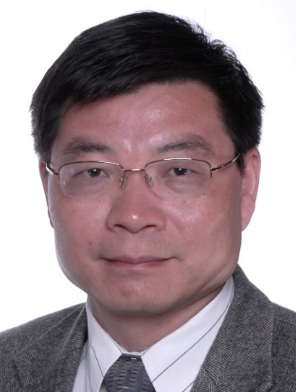
Dr. Ning Lan, Professor of School of Biomedical Engineering, Executive Associate Director of the institute of rehabilitation engineering, and Director of Laboratory of NeuroRehabilitation Engineering at SJTU. He obtained his Ph.D. degree in Biomedical Engineering from Case Western Reserve University in 1989. Then he served as assistant professor and associate professor in University of Kentucky and University of Southern California.
His research interests include: Neural control of movements and neural musculoskeletal modeling; neural rehabilitation engineering and functional electrical stimulus; neural modulation and treatment of neurologic diseases. He has advanced the hypothesis of “α-γ” model of neural control of movements; expanded the multi-scale system’s model of computational sensorimotor control; verified a propriospinal neuron model in the spinal cord for processing descending motor control signals; elucidated the neural mechanism of a non-invasive stimulation protocol for inhibiting tremor in Parkinson’s disease; developed the distributed electrical stimulating system based on body area network; evaluated a rehabilitation strategy of functional electrical stimulation based on muscle synergy for patients post stroke; assessed the phenomenon of evoked tactile sensation in upper limb amputees, and further proposed a noninvasive sensory feedback pathway for prosthetic hand. During the past years, he has served as PI for a number of grants from the Natural Science Foundation of China (NSFC), the 973 National Basic Research Project of Ministry of Science and Technology (MOST), National 985 project III on translational medicine research funding etc. Prof. Ning Lan has been named as the most cited authors in Biomedical Engineering in China from 2014 to 2016 consecutively. He served as the guest associate editor of Frontiers of Computational Neuroscience and organized the research topic on Neural and Computational Modeling of Movement Control.
Email: ninglan@sjtu.edu.cn
Phone: +86-21-62933710
Research interests:
(1). Neural Engineering and Neuromodulation:
Animal studies to evaluate the effectiveness of electrical stimulation of sacral spinal cord for bladder dysfunctions in spinal cord injury, developing next generation of neuromodulation technology to treat the conditions in Parkinson’s disease, and restoring sensory feedback for prosthetic limbs by transcutaneous electrical nerve stimulation (TENS).
(2). Neural Control of Movement and Biomechanics
Modeling sensorimotor control functions and biomechanics of movements, in particular, the roles of proprioceptive afferents in posture and movement control; Computational approach to understanding the functions of basal ganglia-spinal circuitry in discrete reaching movements; Experimental test of the dual control hypothesis for postures and movements.
(3). Rehabilitation Engineering:
Design functional electrical stimulation (FES) systems to retrain and restore motor functions for patients with stroke and spinal cord injury; Modeling and simulation of neuromuscular control system using functional electrical stimulation (FES) to restore limb movements; Neural networks for EMG-based control of neuroprosthetic functions.
Selected publications:
1. Si Li*, Cheng Zhuang*, Chuanxin M. Niu, Yong Bao, Qing Xie and Ning Lan, Evaluation of Functional Correlation of Task-Specific Muscle Synergies with Motor Performance in Patients post Stroke. Frontiers in Neurology (2017). doi: 10.3389/fneur.2017.00337.
2. Man-Zhao Hao*, Shao-Qin Xu*, Zi-Xiang Hu*, Fu-Liang Xu*, Chuanxin M. Niu, Qin Xiao and Ning Lan, Inhibition of Parkinsonian Tremor with Cutaneous Afferent Evoked by Transcutaneous Electrical Nerve Stimulation, Journal of Neuroengineering and Rehabilitation(Accepted), Jun.2017.
3. Hong-En Qu*, Si Li*, Man-Zhao Hao*, Zi-Xiang Hu*, Chuanxin M. Niu and Ning Lan, Corticospinal Gating of Central Oscillation in Generating Action Tremors, Neural Regeneration Research (in press), March. 2017.
4. N. Lan, V.C.K. Cheung and S. C. Gandevia, Editorial – Neural and Computational Modeling of Movement Control, Front. Comput. Neurosci. (2016) 10:90. doi: 10.3389/fncom.2016. 00090
5. H.E. Qu*, Y.J. Xie*, X.X. Liu*, X. He*, M.Z. Hao*, Y. Bao, Q. Xie, and N. Lan, Development of Network-Based Multichannel Neuromuscular Electrical Stimulation System for Stroke Rehabilitation, Journal of Rehabilitation Research & Development 53(2):263-278, 2016.
6. Xin He*, Man-Zhao Hao*, Ming Wei, Qin Xiao, and Ning Lan, Contribution of Inter-Muscular Synchronization in the Modulation of Tremor Intensity in Parkinson’s Disease, J. of Neuroengineering and Rehabilitation (2015) 12:108 DOI 10.1186/s12984-015-0101-x
7. S. Li*, X. He*, M.Z. Hao*, N. Lan, Coordinated Alpha and Gamma Control of Muscles and Spindles in Movement and Posture, Front. Comput. Neurosci. (2015) 9:122. doi: 10.3389 /fncom.2015.00122
8. Guohong Chai*, Xiaohong Sui, Si Li*, Longwen He, and Ning Lan, Characterization of Evoked Tactile Sensation in Forearm Amputees with Transcutaneous Electrical Nerve Stimulation, J. Neural Eng. 12 (2015) 066002, doi:10.1088/1741-2560/12/6/066002
9. S. Li*, G.H. Chai*, X.H. Sui, N. Lan, Finite Element Modeling of Cutaneous Electrical Stimulation for Sensory Feedback, Chinese Journal of Biomedical Engineering (English Edition), vol.23 (4), Dec. 2014.
10. Y.J. Xie*, X.X. Liu*, H.E. Qu* and N. Lan, Design and Implementation of a Wearable Body Area Sensor Network for Distributed FES System, Chinese Journal of Biomedical Engineering (English Edition), vol.23 (4), Dec. 2014.
11. G.H. Chai*, X.X. Sui, P. Li,X.X. Liu*, N. Lan, Review on Tactile Sensory Feedback of Prosthetic Hands for the Upper-Limb Amputees by Sensory Afferent Stimulation, Journal of Shanghai Jiaotong University (Science), 2014, DOI: 10.1007/s12204 -009-0501-3
12. P. Shi*, X.Y. Zhao*, and J.W. Wang and N. Lan, Effects of Acute Sacral Neuromodulation on Bladder Reflex in Complete Spinal Cord Injury Rats, Neuromodulation: Technology at the Neural Interface, 2013,16:583-589, doi: 10.1111/j.1525-1403.2012.00528.x
13. M.Z. Hao*, X. He*, Q. Xiao, B. Alstermark and N. Lan, Corticomuscular Transmission of Tremor Signals by Propriospinal Neurons in Parkinson’s Disease, PLOS ONE 8(11): e79829. doi:10.1371/journal.pone.0079829, 2013.
14. X He*, Y.F. Du* and N Lan, Evaluation of Feedforward and Feedback Contributions to Stiffness and Variability in Multi-Joint Arm Control, IEEE Trans. on Neural Systems and Rehabilitation Engineering, VOL. 21, NO. 4, pp. 634-647, JULY 2013. DOI: 10.1109/ TNSRE.2012.2234479
15. H.E. Qu*, X. He*, Y. Bao, Y.J. Xie*, Q. Xie and N. Lan, Research and Development of Personalized Rehabilitation Technology, World Rehabilitation Engineering and Devices, November 2012.
16. X.Y. Zhao*, M.Z. Hao*, P. Shi* and N. Lan, Neuromodulation Technologies and Applications, World Rehabilitation Engineering and Devices, June 2012.
17. N. Lan and X. He*, Fusimotor Control of Spindle Sensitivity Regulates Central and Peripheral Coding of Joint Angles, Frontiers in Computational Neuroscience, August 2012, doi:10.3389/fncom.2012.00066.
18. Zhao* XY, Shi* P, Sun YH, and Lan N, Evaluation of a rat model of bladder dysfunction induced by complete spinal transection, Chinese J. Rehab. Medicine, 27(2):99-102, 2012.
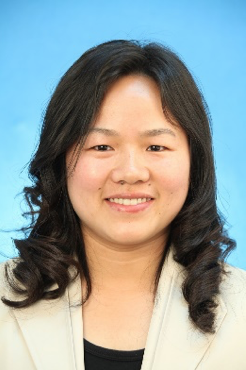
Dr. Haiyan Li received the B.E. degree in 1999 and the M.S. degree in 2002 in Chemical Engineering from Hubei Polytechnic University, Hubei, China, and the Ph.D. degree in 2005 in Materials Engineering from Shanghai Institute of Ceramics, Chinese Academy of Sciences, Shanghai. From 2005 to 2006, she was at Unilevel (Shanghai) Ltd. as a Material Engineer. From 2006 to 2008, she carried out a postdoc research project in Monash University, Melbourne, Australia. From 2008 to 2011, she had been a Postdoctoral Fellow of the INSERM U1026 (577), Bordeaux, France. She joined the School of Biomedical Engineering of Shanghai Jiao Tong University as an associate professor in 2011. She has been involved in a number of industrial and European research projects and has authored or coauthored 59 peer-reviewed SCI papers, 2 book chapters, and 8 patents. Dr. Li has received a number of awards, including Scholar of “Pu Jiang” from the Shanghai Government (2013), and Scholar of “Morning Star” from Shanghai Jiao Tong University (A, B and C grades).
Email: haiyan.li@sjtu.edu.cn
Phone: +86-21-62933243
Research interests:
(1) Research and development of biomaterials for vascularization of tissue engineering, including skin regeneration, bone tissue engineering, cartilage tissue engineering etc.
(2) Mechanism study of cell-cell interactions and materials/cell-cell study for enhancing tissue regeneration.
(3) Mechanism study of effects of biomaterial stimulatory signals on tissue regeneration.
Selected publications:
(1) Dong X, Chang J, Li HY*. Bioglass promotes wound healing through modulating the paracrine effects between macrophages and repairing cells. J Mater Chem B, 2017, 5, 5240 – 5250.
(2) Xu YC, Peng JL, Dong X, Xu YH, Li HY*, Chang J*. Combined chemical and structural signals of biomaterials synergistically activates cell-cell communications for improving tissue regeneration. Acta Biomater, 55:249-261, 2017.
(3) Li HY, He J, Yu HF, Green CR and Chang J. Bioglass promotes wound healing by affecting gap junction connexin 43 mediated endothelial cell behavior. Biomaterials, 84: 64-75, 2016.
(4) Yu HF, Peng JL, Xu YH, Chang J and Li HY*. Bioglass activated skin tissue engineering constructs for wound healing. ACS Appl Mater Interfaces, 8: 703-715, 2016.
(5) Li HY, Xue K, Kong N, Liu K and Chang J. Silicate bioceramics enhanced vascularization and osteogenesis through stimulating interactions between endothelia cells and bone marrow stromal cells. Biomaterials 35: 3803-3818, 2014.
(6) Li HY and Chang J. Bioactive silicate materials stimulate angiogenesis in fibroblast and endothelial cell co-culture system through paracrine effect. Acta Biomater 9: 6981-6991, 2013.
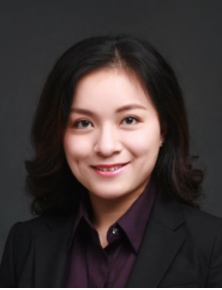
Dr. Yao Li received her B.S. degree from Shanghai Jiao Tong University in 2002, and her Ph.D. degree from the State University of New York at Stony Brook in 2008. She then worked in Stony Brook medical center as a postdoctoral associate. She joined the School of Biomedical Engineering and Med-X research institute in Shanghai Jiao Tong University as an associate professor in 2010. Dr. Li was supported by many research agencies including the National Science Foundation in China, Ministry of Science and Technology, Ministry of Education of China, and Shanghai Municipal Science and Technology Committee, etc. She is the associate editor of BMC Neuroscience. She is a member of Institute of Electrical and Electronics Engineers (IEEE) and Organization of Human Brain Mapping (OHBM). Dr. Li was granted the “SMC Outstanding Young Faculty Award of Shanghai Jiao Tong University” (2016), and “Fei Xiang Young Faculty Talent Program of Shanghai Association for Science and Technology” (2015).
Email: yaoli@sjtu.edu.cn
Phone: +86-21-62933086
Research interests:
(1) Magnetic resonance spectroscopy
(2) Multimodal functional magnetic resonance imaging study in mental disorders (e.g., OCD, schizophrenia, etc) and stroke
(3) Cerebral blood flow imaging
Selected publications:
(1) Li, Yao,Chen, Zengai,Su, Xin,Zhang, Xiaoliu,Wang, Ping,Zhu,
Yajing,Xu, Qun,Xu, Jianrong,Tong, Shanbao(*),Functional lateralizationin cingulate cortex predicts motor recovery after basal ganglia stroke,Neuroscience Letters,2016,613(2):6-12。
(2) Yajing Zhu, Qing Fan, Haiyin Zhang, Jianyin Qiu, Ling Tan, Zeping Xiao, Shanbao Tong, Jue Chen and Yao Li*, “Altered intrinsic insular activity predicts symptom severity in unmedicated obsessive-compulsive disorder patients: a resting state functional magnetic resonance imaging study”, BMC Psychiatry, 2016,16:104.
(3) Xiaoliu Zhang,Yingying Tang,Mirjana Maletic-Savatice,Jianhua Sheng, Xuanhong Zhang, Yajing Zhu, Tianhong Zhang, Junjie Wang, Shanbao Tong, Jijun Wang, Yao Li*, “Altered neuronal spontaneous activity correlates with glutamate concentration in medial prefrontal cortex of major depressed females: an fMRI-MRS study”, Journal of Affective Disorders, 2016, 201:153-161.
(4) Zhu,Yajing,Fan,Qing,Han,Xu,Zhang,Haiyin,Chen,Jue,Wang,Zhen,Zha
ng,Zongfeng,Tan,Ling,Xiao,Zeping,Tong,Shanbao,Maletic-Savatic, Mirjana,Li,Yao*,Decreased thalamic glutamate level in unmedicated adult obsessive compulsive disorder patients detected by proton magnetic resonance spectroscopy,Journal of Affective Disorders,2015,178:193-200。
(5) Manganas, Louis N ,Zhang, Xueying,Li, Yao,Hazel, Raphael D,Smith, S David,Wagshul, Mark E,Henn, Fritz,Benveniste, Helene,Djuric, Petar M,Enikolopov, Grigori,Maletic-Savatic, Mirjana*,Magnetic resonance spectroscopy identifies neural progenitor cells in the live human
brain,Science,2007,318(5852):980-985。
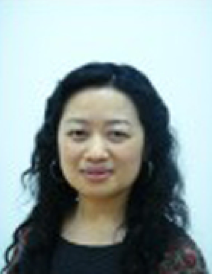
Dr. Ping Liu received the B.E. degree in 1994 and the M.S. degree in 1997 in animal sciences and technology from Sichuan Agricultural University,Sichuan, China, and the Ph.D. degree in 2005 in life sciences and biotechnology from Shanghai Jiao Tong University, Shanghai, China. Dr. Liu published more than 30 peer reviewed Journal papers.
Email: pingliu@sjtu.edu.cn
Phone: +86-21-62932304
Research interests:
(1) Cancer treatment by the multi-mode thermal therapy: Therapeutic effects on metastatic cancer by the multi-mode thermal therapy;Mechanism of biological and immunologic effects induced by the the multi-mode thermal therapy.
(2) Study on the role of trace metal iron in breast cancer progression and metastasis.
Selected publications:
(1) He K.; Jia S.G.; Lou Y.; Liu P.; Xu L.X.; Cryo-thermal Therapy Induces Macrophage Polarization for Durable Anti-tumour Immunity, Cell Death & Disease, 2019,10.
(2) He, K.; Liu, P.; Xu, L.X.; The cryo-thermal therapy eradicated melanoma in mice by eliciting CD4+ T-cell-mediated antitumor memory immune response, Cell Death & Disease, 2017, 8, 2703.
(3) Xu, L.X.; Zhang, A.L.; Liu, P.; Thermo-immune therapy: A novel treatment for metastatic cancer, Science (special issue), 2016.
(4) Xue T.; Liu P.; Xu, L.X.; Interleukin-6 Induced“Acute”Phenotypic Microenvironment Promotes Th1 Anti-Tumor Immunity In Cryo-Thermal Therapy Revealed By Shotgun And Parallel Reaction Monitoring Proteomics; Theranostics, 2016, 6, 773.
(5) Rongchang Chen, Ping Liu* (*Co-first author), Tiqiao Xiao, and Lisa X Xu, 2014, “ X-Ray Imaging for a Nondestructive Microstructure Analysis at SSRF”, Adv. Mater., vol. 26, pp.7688-91
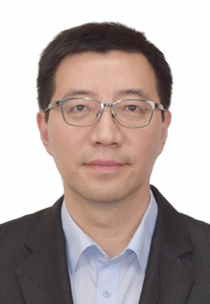
Dr. Dahong Qian received his Ph.D. degree in 2002 from Harvard University, Cambridge, MA. He has over 15 years of experience in high tech industry.
Email: dahong.qian@sjtu.edu.cn
Phone:
Research interests:
(1) Deep learning-based medical image and other data analysis and diagnostics;
(2) Ultra low power sensors and wireless transmission for body area network;
(3) Point-of-care miniature biosensors and AI-based data analysis.
Selected publications:
· K. Jin, H. Lu, Z. Su, C. Cheng, J. Ye, D. Qian, “Telemedicine screening of retinal diseases with a handheld portable non-mydriatic fundus camera”, BMC Ophthalmology, 2017.
· M. Zhou, K. Jin, S.Wang, J. Ye, D. Qian, ”Color Retinal Image Enhancement Based on Luminosity and Contrast Adjustment”, IEEE Transactions on Biomedical Engineering, 2017.
· Wang SZ, Jin K, Lu HT, Cheng CM, Ye J, D. Qian, “Human Visual System-Based Fundus Image Quality Assessment of Portable Fundus Camera Photographs”, IEEE Transactions on Medical Imaging. 2016;35(4):1046-55.
· Deng C, Sheng Y, Wang SY, Hu W, Diao SX, D. Qian, “A CMOS Smart Temperature Sensor with Single-Point Calibration Method for Clinical Use”, IEEE Transactions on Circuits and Systems II-Express Briefs. 2016;63(2):136-40.
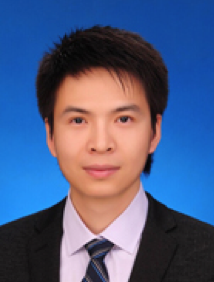
Prof. Dr. Kun Qian, BS/MS at Fudan University, PhD at University of Queensland, Research Fellow at Stanford University. He is now a principle investigator (PI) at School of Biomedical Engineering, Shanghai Jiao Tong University. His research interests and efforts are focused on the development and commercialization of ultra-sensitive and high-throughput bio-analytical methods and mass spectrometry techniques towards large-scale clinical use through design, synthesis, and engineering of materials and devices. He has co-authored over 60 peer-reviewed articles in top international journals, including Matter, Nat Com, ACS Cen Sci, Adv Mater, Adv Funct Mater, Adv Sci, ACS Nano et al. Dr. Qian has attracted grants from top research programs (e. g. from NSFC) and received several prestigious domestic/international awards for research excellence. He held several key patents and had strong connections with domestic and international industry partners.
Email: k.qian@sjtu.edu.cn
Phone: +86-21-62933086
Research interests:
(1) materials and devices
(2) mass spectrometry
(3) bio-molecular analysis
(4) disease diagnosis
Selected publications:
(1) Huang, L. et al. and Qian, K.* Matter, 2019, D-19-00193.
(2) Sun, X. et al. and Qian, K.* ACS Central Science 2018, 4, 223.
(3) Huang, L. et al. and Qian, K.* Nature Communications 2017, 8, 220.
(4) Wu, J. et al. and Qian, K.* Advanced Functional Materials 2016, 26, 4016.
(5) Qian, K. et al. ACS Nano, 2009, 3, 3656.

Dr. Zhifeng Shao, K.C. Wong Chair Professor of Biomedical Engineering and Senior Director, Zhiyuan Innovative Research Center. Professor Shao received his undergraduate degree in physics from Nanjing University and the Ph.D. degree in physics from University of Chicago. He was elected an AAAS Fellow in 2000 and a Fellow of AIMBE in 2016. Professor Shao was on the faculty at University of Virginia from 1989-2009 and was promoted to full professor with tenure in 1998. He now holds the Professor Emeritus title at the University of Virginia (UVa). Professor Shao served as Director of Shanghai Center for Systems Biomedicine at Shanghai Jiao Tong University (SJTU) from 2009- 2013. During his tenure at UVa, Professor Shao served on many US review panels, including NSF and NIH study sections as well as other funding agencies. Since he joined the faculty at SJTU, Professor Shao has also served as reviewers or advisors in many national programs, such as NSFC, the '973 program' of Chinese Ministry of Science and Technology and National Thousand Talent Programs. Professor Shao published more than 180 peer reviewed articles and reviews in influential journals, such as Advances in Physics, Annual Review of Cell and Developmental Biology, Accounts of Chemical Research. Professor Shao is also a member of several editorial boards and was appointed as an associate editor for Nanomedicine NBM in 2016.
Email: zfshao@sjtu.edu.cn
Phone: +86-21-34205188
Research interests:
(1) Chromosome structure and function using Hi-C and sequencing based technologies, super resolution imaging and related methods.
(2) Development and application of atomic force microscopy and related single molecule approaches, including cryo-imaging and force spectroscopy.
(3) Mechanisms of early carcinogenesis using single cell technology and laser based microdissection.
Selected publications:
(1) Chen, J., Zhu, C., Wang, C., Hu, C., Czajkowsky, D.M., Guo, Y., Liu, B., Shao, Z. Evidence for Heightened Genetic Instability in Precancerous Spasmolytic Polypeptide Expressing Gastric Glands. Journal of Medical Genetics 2018-105752 (2019)
(2) Wang, Q., Sun, Q., Czajkowsky, D.M., Shao, Z. Sub-kb Resolution Hi-C in D. Melanogaster Reveals Conserved Characteristics of TADs between Insect and Mammalian Cells. Nature Communications 9, 188 (2018).
(3) Meng, Y.C., Yi, J., Hu, C., Li, X.H., Bai, L., Czajkowsky, D.M., Shao, Z. The Non-Coding RNA Composition of the Mitotic Chromosome by 5′-tag Sequencing. Nucleic Acids Research 44, 4934-4946 (2016)
(4) Tan, L., Liu, Y., Li, X., Wu, X.Y., Gong, B., Shen, Y.M., Shao, Z. Synthesis and evaluations of an acid-cleavable, fluorescently labeled nucleotide as a reversible terminator for DNA sequencing. Chemical Communications 52, 2549-2552 (2016).
(5) Gong, B., Shao, Z. Self-assembling Organic Nanotubes with Precisely Defined, Sub-nanometer Pores: formation and mass transport characteristics. Accounts of Chemical Research 46, 2856–2866 (2013).

Junfeng Sun, PhD, is an Associate Professor and Distinguished Research Fellow of biomedical engineering at School of Biomedical Engineering and Med-X Research Institute, Shanghai Jiao Tong University. He gained his Bachelor Degree (Electronic Science and Information Systems) and the Master Degree (Acoustics) from Nanjing University, and Ph. D degree (Electronic and Information Engineering) from the Hong Kong Polytechnic University. He has been a Visiting Research Associate (08.2012 - 08.2013) at Department of Biomedical Engineering, University of Minnesota. He is IEEE Senior Member, Guest Associate Editor of Frontiers in Aging Neuroscience, and referees for more than 20 international journals. He has published more than 30 papers in SCI journals. He is the principal investigator of grants from NSFC and co-investigator of grant from National Basic Research Program of China (973) and National Key Research and Development Program of China. He is also the awardee of the SMC-Morning Star Award for Young Investigator, Shanghai Jiao Tong University, 2011. He instructs the course Signal and Linear System for undergraduate students and the course Biomedical Signal Processing for graduated students.
Email: jfsun@sjtu.edu.cn
Office Tel: +86-21-62933291
Research Interests:
(1) Neuroimaging (EEG, fMRI, DTI) and brain network modeling
(2) Transcranial Ultrasound Stimulation and Transcranial Magnetic Stimulation,
(3) Applications of above techniques to Cognitive Function and Intervention for Depression, Stroke, Aging and other Mental Disorders.
Selected publications:
[1] Hangdao Li, Junfeng Sun, Daqu Zhang, Daryl Omire-Mayor, Peter A. Lewin, Shanbao Tong, “Low-intensity (400 mWcm2, 500 kHz) pulsed transcranial ultrasound preconditioning may mitigate focal cerebral ischemia in rats”, Brain Stimulation, 10: 695-702, 2017.
[2] Lifu Deng, Junfeng Sun*, Lin Cheng, and Shanbao Tong, “Characterizing dynamic local functional connectivity in the human brain”, Scientific Reports, 6: 26976, 2016. (*通讯作者)
[3] Xiangfei Hong, Junfeng Sun, Jesse Bengson, George Mangun, and Shanbao Tong, “Normal aging selectively diminishes alpha lateralization in visual spatial attention”, Neuroimage, 106: 353-363, 2015.
[4] Junfeng Sun, Xiangfei Hong, and Shanbao Tong, “Phase synchronization analysis of EEG signals: An evaluation based on surrogate tests”, IEEE Transactions on Biomedical Engineering, 59(8): 2254-2263, 2012.
[5] Junfeng Sun* and Michael Small, “Unified framework for detecting phase synchronization in coupled time series”, Physical Review E, 80: 046219, 2009.
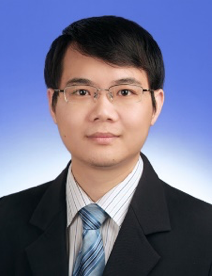
Dr. Yaohui Tang received his Ph.D. degree from Shanghai Jiao Tong University in 2014. After graduation, he worked as a postdoc at Max-Planck-Institute for biological cybernetics in Germany and Stanford University in U.S. In 2018 he was recruited as a tenure-track assistant professor in School of Biomedical Engineering, Med-X Research Institute, Shanghai Jiao Tong University. Dr. Tang has a broad interest in stem cell and gene-based therapy for ischemic stroke and tissue engineering. His work has been published on Stroke, JCBFM, AFM, etc, with more than 1000 citations and H-index=16. His work has been supported by the National Key Research and Development Program of China, national NSFC and Key program of Shanghai Jiaotong University Medicine-engineering Research.
Email: yaohuitang@sjtu.edu.cn
Phone: +86-21-62932263
Research interests:
(1) Biomaterials-based therapy for stroke and brain engineering
(2) Stem cell-based therapy for ischemic stroke
(3) Development of molecular probes for stem cell tracking
(4) Gene based therapy for ischemic stroke
Selected publications:
1. Yaying Song, Zongwei Li, Tingting He, Meijie Qu, Lu Jiang, Wanlu Li, Xiaojing Shi, Jiaji Pan,
Linyuan Zhang, Yongting Wang, Zhijun Zhang*, Yaohui Tang* and Guo-Yuan Yang*. (Co-corresponding author) M2 microglia-derived exosomes protect the mouse brain from ischemia-reperfusion injury via exosomal miR-124. Theranostics. 2019. May 4;9(10):2910-2923.
2. Meijie Qu, Jiaji Pan, Liping Wang, Panting Zhou, Yaying Song, Shuhong Wang, Lu Jiang, Jieli Geng, Zhijun Zhang, Yongting Wang, Yaohui Tang* and Guo-Yuan Yang*. (Co-corresponding author) MicroRNA-126 regulates angiogenesis and neurogenesis in a mouse model of focal cerebral ischemia. Molecular Therapy-Nucleic Acid. 2019 Feb 11;16:15-25.
3. Yaohui Tang, Chunfu Zhang, Jixian Wang, Xiaojie Lin, Lu Zhang, Yi Yang, Yongting Wang, Zhijun Zhang, Jeff W.M. Bulte, Guo-Yuan Yang. MRI/SPECT/Fluorescent tri-Modal probe for evaluating the homing and therapeutic efficacy of transplanted mesenchymal stem cells in a rat ischemic stroke model. 2015. Advanced Functional Materials. Feb; 25(7):1024-34
4. Yaohui Tang, Jixian Wang, Xiaojie Lin, Liuqing Wang, Bei Shao, Kunlin Jin, Yongting Wang, Guo-Yuan Yang. Neural stem cell protects aged rat brain from ischemia-reperfusion injury through neurogenesis and angiogenesis. 2014. Journal of Cerebral Blood Flow & Metabolism. Jul; 34(7):1138-47
5. Jia Li*, Yaohui Tang*, Yongting Wang, Rongbiao Tang, Weifang Jiang, Guo-Yuan Yang, Wei-Qiang Gao. (Co-first author) Neurovascular recovery via cotransplanted neural and vascular progenitors leads to improved functional restoration after ischemic stroke in rats. 2014. Stem Cell Reports. Jun 19; 3(1):101-14 (IF:7.338)
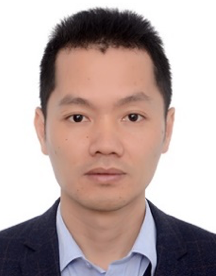
Dr. Shengxian Tu is a Professor at the School of Biomedical Engineering, Shanghai Jiao Tong University. He received his master degree in Biomedical Engineering from Shanghai Jiao Tong University in 2008. After that, he joined the Medis Applied Research group as a scientific researcher, while at the same time pursuing a PhD degree at the Division of Image Processing (LKEB), Department of Radiology, Leiden University Medical Center, the Netherlands. He graduated cum laude in February 2012. He joined Shanghai Jiao Tong University as a Faculty in 2014. He is the inventor of several patents including the methods for computation of fractional flow reserve from imaging data (QFR and OFR). He is also the founder of three quantitative analysis systems (AngioPlus, OctPlus, and QAngio XA 3D), which are being used for clinical decisions or studies by a number of hospitals in Europe, Asia, and America. Over the past few years he has published several articles in the leading cardiovascular journals such as J Am Coll Cardiol, J Am Coll Cardiol Interv, and Circ Cardiovasc Interv. In 2014 he was accepted as a Fellow of European Society of Cardiology (FESC) and in 2017 he was accepted as a Fellow of American College of Cardiology (FACC). Currently, he serves as an associate editor of the International Journal of Cardiovascular Imaging and a member of the Editorial Board of Cardiology Journal, Journal of Geriatric Cardiology, and Cardiovascular Diagnosis and Therapy. So far, he has authored or coauthored more than 60 peer-reviewed papers and 20 patents. Dr. Tu is PI of a total of 6 approved grant applications in China for a total value of about $2M, including National Key R&D Program of China.
Email: sxtu@sjtu.edu.cn
Phone: +86-21-62932631
Research interests:
(1) Cardiovascular imaging and quantitative analysis.
(2) Vascular hemodynamics, coronary intervention.
(3) Fractional flow reserve.
(4) Shear stress.
(5) Optical coherence tomography.
(6) Artificial intelligence.
Selected publications:
(1) Yu W, Huang H, Jia D, Chen S, Raffel OC, Ding D, Tian F, Kan J, Zhang S, Yan Y, Chen Y, Bezerra HG, Wijns W, Tu S*. Diagnostic Accuracy of Intracoronary Optical Coherence Tomography-derived Fractional Flow Reserve for Assessment of Coronary Stenosis Severity. EuroIntervention 2019;15:189-197.
(2) Xu B#, Tu S#*, Qiao S, Qu X, Chen Y, Yang J, Guo L, Sun Z, Li Z, Tian F, Fang W, Chen J, Li W, Guan C, Holm NR, Wijns W, Hu S*. Diagnostic Accuracy of the Angiography-Based Quantitative Flow Ratio for Online Assessment of Coronary Stenosis. J Am Coll Cardio 2017; 70: 3077-87.
(3) Wu X, Von Birgelen C, Takashi M, Li Y, Holm NR, Reiber JHC, Tu S*. A novel four-dimensional angiogrephic approach to assess dynamic superficial wall stress of coronary arteries in vivo: Initial experience in evaluating vessel sites with subsequent plaque rupture. EuroIntervention 2017; 13 (9): 1099-1103.
(4) Tu S*, Westra J, Yang J, von Birgelen C, Ferrara A, Pellicano M, Nef H, Tebaldi M, Murasato Y, Lansky A, Barbato E, van der Heijden LC, Reiber JHC, Holm NR, Wijns W,FAVOR Pilot Trial Study Group. Diagnostic Accuracy of Fast Computational Approaches to Derive Fractional Flow Reserve From Diagnostic Coronary Angiography: The International Multicenter FAVOR Pilot Study. J Am CollCardiolInterv 2016; 9:2024–35.
(5) Li Y, Gutiérrez-Chico JL, Holm NR, Yang W, Hebsgaard L, Christiansen EH, Mæng M, Lassen JF, Yan F, Reiber JHC, Tu S*.Impact of Side Branch Modeling on Computation of Endothelial Shear Stress in Coronary Artery Disease: Coronary Tree Reconstruction by Fusion of 3D Angiography and OCT. J Am Coll Cardio 2015; 66:125-35.
(6) Tu S*, Echavarria-Pinto M, von Birgelen C, Holm NR, Pyxaras SA, Kumsars I, Lam MK, Valkenburg I, Toth GG, Li Y, Escaned J, Wijns W, Reiber JHC. Fractional flow reserve and coronary bifurcation anatomy: A novel quantitative model to assess and report the stenosis severity of bifurcation lesions. J Am CollCardiolInterv 2015; 8:564-74.
(7) Tu S*, Barbato E, Koszegi Z, Yang J, Sun Z, Holm NR, Tar B, Li Y, Rusinaru D, Wijns W, Reiber JHC.Fractional flow reserve calculation from 3-dimensional quantitative coronary angiography and TIMIframe count: A fast computer model to quantify the functional significance of moderately obstructed coronary arteries. J Am CollCardiolInterv 2014, 7:768-777.
(8) Tu S*, Pyxaras SA, Li Y, Barbato E, Reiber JHC, Wijns W. In vivo flow simulation at coronary bifurcation reconstructed by fusion of 3-dimensional X-ray angiography and optical coherence tomography. CircCardiovasc Interv2013, 6:e15-e17.
(9) Li Z, Zhang J*, Xu L, Yang W, Li G,Ding D, Chang Y, Yu M, Kitslaar P, Zhang S, Reiber JHC, Arbab-Zadeh A, Yan F, Tu S*. Diagnostic Accuracy of a Fast Computational Approach to Derive Fractional Flow Reserve from Coronary CT Angiography. J Am Coll Cardiol Img 2019. In Press
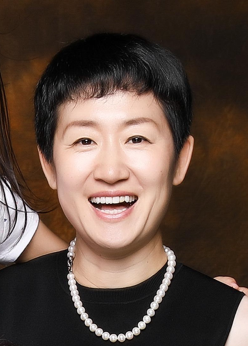
Prof. Yongting Wang received her Ph.D. degree of Biochemistry from the University of Mississippi Medical Center in 2004. She studied protein subunit interaction and protein aggregation diseases as a post-doctoral fellow at MIT (2004-2008) before joining Med-X Research Institute of SJTU in 2008 as an Associate Professor (2008-2011). She is now a Professor in the School of Biomedical Engineering. Her current research focuses on strategies that promote neurovascular remodeling and functional recovery after ischemic stroke. Her research team developed gene therapy, adult stem cell therapy, gene-engineered stem cell therapy, and optogenetics techniques to enhance angiogenesis and neurogenesis in the ischemic brain. She had published more than 70 peer-reviewed research articles in high-impact journals including STROKE and JCBFM. She is the recipient of SMC Young Faculty Award (2009-2011), the Science and Technology Progress Award from the Ministry of Education (2013), and the NSFC Excellent Young Scientists Fund (2015). She is a member of the American Heart and Stroke Association and a Board member of the International Society for Cerebral Blood Flow & Metabolism (ISCBFM).
E-mail: ytwang@sjtu.edu.cn
Research Interests :
1. Gene therapy and engineered stem cell therapy of stroke;
2. Investigation of specific neurons in adult neurogenesis after stroke using optogenetics approach.
Selected publications:
1. He, X., Y. Lu, X. Lin, L. Jiang, Y. Tang, G. Tang, X. Chen, Z. Zhang, Y. Wang*, and G.-Y. Yang*, Optical inhibition of striatal neurons promotes focal neurogenesis and neurobehavioral recovery in mice after middle cerebral artery occlusion. Journal of Cerebral Blood Flow & Metabolism, 2017: p. 0271678X16642242.
2. Li Y, Tang G, Liu Y, He X, Huang J, Lin X, Zhang Z, Yang GY*, Wang Y*. CXCL12 Gene Therapy Ameliorates Ischemia-Induced White Matter Injury in Mouse Brain. Stem Cells Transl Med. 2015; 10:1122-30
3. Li Y, Huang J, He X, Tang G, Tang YH, Liu Y, Lin X, Lu Y, Yang GY*, Wang Y*. Postacute stromal cell-derived factor-1α expression promotes neurovascular recovery in ischemic mice. Stroke. 2014;45(6):1822-9.
4. He X, Li Y, Lu H, Zhang Z, Wang Y*, Yang GY*. Netrin-1 overexpression promotes white matter repairing and remodeling after focal cerebral ischemia in mice. J Cereb Blood Flow Metab. 2013; 33(12): 1921-7.
5. Huang J, Li Y, Tang Y, Tang G, Yang GY*, and Wang Y*. CXCR4 Antagonist AMD3100 Protects Blood–Brain Barrier Integrity and Reduces Inflammatory Response after Focal Ischemia in Mice. Stroke 2013 44(1): 190-7
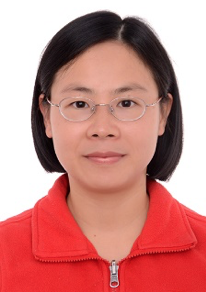
Dr. Liqin Xiong is Special Professor of School of Biomedical Engineering, Shanghai Jiao Tong University. She received the bachelor’s degree (2004) in Chemistry and Life Science from Gannan Normal University, the master’s degree (2007) in Chemistry from Beijing Normal University, and the doctoral degree in Chemistry from Fudan University in July 2010. Dr. Xiong conducted postdoctoral research at Stanford University School of Medicine for period August 2010 to July 2012. She has published over 30 papers with a total impact factor over 140 and citation times over 2000. Dr. Xiong has won the Dow Chemical Scholarship in 2009, Fudan “Self-Dependence” Scholarship for Academic Research in 2010, Shanghai Pujiang Talent Program in 2013, and Li Lanxin Young Teacher Award in 2016.
Email: xiongliqin@sjtu.edu.cn
Phone: +86-21-62933243
Research Interests:
Smart nanoprobes and tumor molecular imaging: a) Preparation of near-infrared fluorescent polymer dots for lymph node mapping, tumor-targeted imaging and cell tracking in vivo, b) Development of novel 18F-labeled rare-earth nanoprobes for multi-modal imaging, c) Development of multi-functional nanoprobes for tumor imaging and therapy in vivo.
Selected publications:
1. Xiong L*, Guo Y, Zhang Y, Cao F, Highly luminescent and photostable near-infrared fluorescent polymer dots for long-term tumor cell tracking in vivo, J. Mater. Chem. B, 2016;4:202-6.
2. Cao X, Cao F, Xiong L*, Yang Y, Cao T, Cai X, Hai W, Li B, Guo Y, Zhang Y, Li F. Cytotoxicity, tumor targeting and PET imaging of sub-5 nm KGdF4 multifunctional rare earth nanoparticles. Nanoscale. 2015;7(32):13404-9.
3. Xiong L*, Cao F, Cao X, Guo Y, Zhang Y, Cai X. Long-term-stable near-infrared polymer dots with ultrasmall size and narrow-band emission for imaging tumor vasculature in vivo. Bioconjug Chem. 2015;26(5):817-21.
4. Xiong L*, Shen B, Behera D, Gambhir SS, Chin FT, Rao J*. Synthesis of ligand-functionalized water-soluble [18F]YF3 nanoparticles for PET imaging. Nanoscale. 2013;5(8):3253-6.
5. Xiong L, Shuhendler AJ, Rao J*. Self-luminescing BRET-FRET near-infrared dots for in vivo lymph-node mapping and tumour imaging. Nat Commun. 2012;3:1193.

Dr. Hong Xu is a professor at School of Biomedical Engineering of Shanghai Jiao Tong University. Her research interests include preparation of composite nanoparticles with precisely controllable structures and functions as well as applications of functional nanomaterials for bio-detection and clinical uses. In recent years, she has successfully transferred a number of research achievements to clinic applications, including high throughput suspension assays for multiplexed detection and high performance magnetic beads for blood screening. Dr. Xu has published over 60 peer-review papers and applied for more than 20 patents. She has received several awards including the Second Prize of Shanghai Technology Invention Award (2013), and the Second Prize of Natural Science Award of Ministry of education (2015).
Email: xuhong@sjtu.edu.cn
Phone: +86-21-62933743
Research interests:
(1) Preparation of composite nanoparticles with precisely controllable structures and functions.
(2) Functional nanomaterials and their interactions between bio-molecules.
(3) High performance bio-detection technology and clinical application based on micro-nano technology.
Selected publications:
1) Ding Sheng-zi Zhang, Yang Jiang, Haiou Yang, Youjie Zhu, Shunjia Zhang, Ying Zhu,Dan Wei1, Ye Lin, PingPing Wang, Qihua Fu, Hong Xu*, Hongchen Gu*, Dual-Encoded Microbeads through a Host-Guest Structure: Enormous, Flexible and Accurate Barcodes for Multiplexed Assays, Advanced Functional Materials, 2016, 26, 6146-6157 (Cover Article)
2) Peirui Wang, Ping Xu, Pingping Wang, Lingling Deng, Hongchen Gu, Hong Xu*, Improvement of Protein Immobilization and Bioactivity of Magnetic Carriers Using a Brushed Beads-on-Beads Structure, ACS Applied Materials & Interfaces , 2015, 7, 24390−24395
3) Zhenyuan Qu, Hong Xu*, and Hongchen Gu*,Synthesis and Biomedical Applications of Poly((meth)acrylic acid) Brushes,2015, ACS Applied Materials & Interfaces,DOI: 10.1021/acsami.5b02912
4) Zhenyuan Qu, Hong Xu*, Kaimin Chen, Hongchen Gu, Ultrasensitive ELISA Using Enzyme-loaded Nanospherical Brushes as Labels, 2014, Analytical Chemistry, 86, 9367−9371
5) Zhenyuan Qu, Kaimin Chen, Hongchen Gu, Hong Xu*, Covalent Immobilization of Proteins on 3D Poly(acrylic acid) Brushes: Mechanism Study and a More Effective and Controllable Process, Bioconjugate Chemistry, 2014, 25, 370−378 (Cover Article)
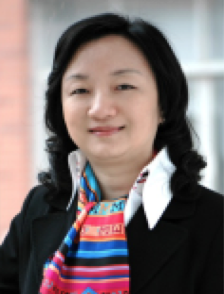
Dr. Xu received her Ph.D. degree in 1991 from University of Illinois at Urbana-Champaign, USA. She was on the faculty of The City University of New York, and promoted to associate professor with tenure in 1996. She then moved to Purdue University and took the tenured associate professor position in Mechanical Engineering in 1997 and a joint faculty position in Biomedical Engineering in 1998. Dr. Xu became the "Chang Jiang Scholar" Distinguished Professor in Biomedical Engineering at Shanghai Jiao Tong University awarded by Chinese Ministry of Education in 2003, and received the "Outstanding Youth Award" by Chinese Natural Science Foundation (CNSF) in 2007. She was the recipient of Natural Science Award from Chinese Ministry of Education (2ndplace) in 2010. Her research interests encompass fundamental study of bio-thermal physics, cancer thermal therapy, and medical device supported by NCI and NSF in US, and Chinese NSF, key national center grants from Chinese Ministry of Science and Technology. She has published more than 150 peer reviewed journal papers and conference proceedings, and five book chapters. She is an elected ASME Fellow, AIBME Fellow and a senior member of IEEE EMBS. She is currently serving as vice president of Shanghai Association for Science & Technology and vice president of Shanghai Federation of Returned Overseas Chinese. She was the technical program chair for The 2005 EMBC in Shanghai, China and the AdCom Member of EMBS (2011-2013). She has served as the President of Shanghai Society of Biomedical Engineering (2010-2018).
Email: lisaxu@sjtu.edu.cn
Phone: +86-21-62933234/+86-21-34204876
Selected publications:
(1) Zhang K.W.; Zou J.C.; He K.; Xu L.C.; Liu P.; Li W.T.; Zhang A.L.; Xu L.X.; Study of enhanced radiofrequency heating by pre-freezing tissue, International Journal of Hyperthermia, 2019, 35
(2) He K.; Jia S.G.; Lou Y.; Liu P.; Xu L.X.; Cryo-thermal Therapy Induces Macrophage Polarization for Durable Anti-tumour Immunity, Cell Death & Disease, 2019,10.
(3) Xin, Y.; Zhang, A.L.; Xu, L.X.; Fowlkes, J.B.; Numerical Study of Bubble Area Evolution During Acoustic Droplet Vaporization-Enhanced HIFU Treatment, Journal of Biomechanical Engineering, 2017,139.
(4) Xu, L.X.; Zhang, A.L.; Liu, P.; Thermo-immune therapy: A novel treatment for metastatic cancer, Science (special issue), 2016.
(5) Xue T.; Liu P.; Xu, L.X.; Interleukin-6 Induced“Acute”Phenotypic Microenvironment Promotes Th1 Anti-Tumor Immunity In Cryo-Thermal Therapy Revealed By Shotgun And Parallel Reaction Monitoring Proteomics; Theranostics, 2016, 6, 773.
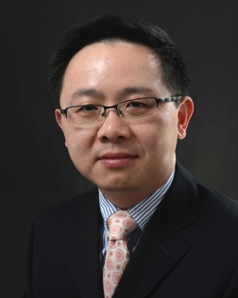
Dr. Jian Ye received the B.E. degree in 2000 and the M.S. degree in 2003 in polymer science and engineering from Zhejiang University, Zhejiang, China, and the Ph.D. degree in 2010 in chemistry from Katholieke Universiteit Leuven (KU Leuven), Leuven, Belgium. From 2003 to 2005, he was at Intel Products (Shanghai) Ltd. as a Material Engineer. From 2005 to 2010, he performed the Ph.D. research project in Interuniversity Microelectronics Centre (IMEC) vzw, Belgium. Since 2010, he has been a Postdoctoral Fellow of the Research Foundation–Flanders (FWO), KU Leuven. In 2011 (March–September), he was with the nanophotonics group of Prof. Naomi Halas at Rice University as a Visiting Scholar. He joined the School of Biomedical Engineering of Shanghai Jiao Tong University in 2013 and was promoted as a full professor in 2018. He has been involved in a number of industrial and European research projects and has authored or coauthored 70 referred papers, 1 book chapter, and 12 patents. Dr. Ye has received a number of awards including Outstanding Youth Fund from Chinese National Natural Science Foundation (2016).
Email: yejian78@sjtu.edu.cn
Group webpage: www.yelab.sjtu.edu.cn
Research interests:
(1) Design, fabrications, and optical properties of plasmonic nanomaterials including Finite Difference Time Domain (FDTD) simulations, wet chemistry and physical lithographic fabrications, near-field and far-field characterizations.
(2) Biomedical applications of plasmonic nanomaterials including highly sensitive and multiplexed molecular diagnostic methods, nanomaterials-based biomedical imaging and therapy.
(3) Surface-enhanced Raman spectroscopy (SERS)/gap-enhanced Raman tags (GERTs) including substrate design and fabrications, enhancement mechanism, and biomedical applications
Selected publications:
(1) Zhang, Y.; Gu, Y.; He, J.; Thackray, B, D.; Ye, J.*; Ultrabright gap-enhanced Raman tags for high-speed bioimaging. Nature Communications, 2019, 10, 3905
(2) Shi, F.; He, J.; Zhang, B.; Peng, J.; Ma, Y.; Chen, W.; Li, F.; Qin, Y.; Liu, Y.; Shang, W.; Tao, P.; Song, C.; Deng,T.; Qian, X.; Ye, J.* and Wu, J.*; Plasmonic-Enhanced Oxygen Reduction Reaction of Silver/Graphene Electrocatalysts. Nano Letters, 2019, 19, 1371.
(3) Lin, L.; Zhang Q.; Li, X.; Qiu, M.; Jiang, X.; Jin, W.; Gu, H.*; Lei, D.*; Ye, J.*; Electron Transport Across Plasmonic Molecular Nanogaps Interrogated with Surface-Enhanced Raman Scattering. ACS Nano, 2018, 12, 6492.
(4) Qiu Y.; Zhang Y.; Li M.; Chen G.; Fan C.; Cui K.; Wan J.; Han A.; Ye J.*and Xiao Z.*; Intraoperative Detection and Eradication of Residual Microtumors with Gap-Enhanced Raman Tags. ACS Nano, 2018, 12, 7974.
(5) Bao, Z.; Zhang, Y.; Tan, Z.; Yin X.; Di, W.*, Ye, J.*; Gap-enhanced Raman tags for high-contrast sentinel lymph node imaging. Biomaterials, 2018, 163, 105.
(6) Lin, L.; Zapata, M.; Xiong, M.; Liu, Z.; Wang, S.; Xu, H.; Borisov, A.G.; Gu, H.; Nordlander, P.*; Aizpurua, J.*; Ye, J.*; Nanooptics of plasmonic nanomatryoshkas: shrinking the size of a core-shell junction to subnanometer, Nano Letters, 2015, 15, 6419.
(7) Ye, J.*; Wen, F.; Sohbani, H.; Lassiter, B.; Van Dorpe, P.; Nordlander, P.; Halas, N.* Plasmonic nanoclusters: near field properties of the Fano resonance interrogated with SERS, Nano Letters, 2012, 12, 1660.
(8) Wen, F.F.#; Ye, J.*,#; Liu, N.#; Van Dorpe, P.; Nordlander, P.; Halas, N.J.* Plasmon Transmutation: Inducing New Modes in Nanoclusters by Addling Dielectric Nanoparticles, Nano Letters, 2012, 12, 5020. (#: equal contribution)
(9) Ye, J.*; Verellen, N.; Van Roy, W.; Lagae, L.; Maes, G.; Borghs, G.; Van Dorpe, P. Plasmonic modes of metallic semishells in a polymer film, ACS Nano, 2010, 4, 1457.

Dr. Hui Yu received his B.E. degree in 2006 and Ph.D degree in 2011 in Biomedical Engineering from Zhejiang University, China. From 2011 to 2012, he was a postdoc research associate at Hong Kong University of Science and Technology. During 2012-2017, he worked as an assistant research scientist in Biodesign Institute at Arizona State University, USA. He joined the School of Biomedical Engineering of Shanghai Jiao Tong University as the Professor of Special Appointment in 2017. He has authored or coauthored 32 referred papers, 2 book chapters, and 7 patents.
Email: hui.yu@sjtu.edu.cn
Phone: +86-21-62933948
Research interests:
(1) Design, fabrication and devolopment of plasmonic biosensors for disease diagnostics, including highly sensitive and multiplexed detection, and point-of-care testing devices.
(2) Optical engineering of plasmonic microscopy for clinical use, including the development of prototypes for exosome analysis and biomolecular detection.
Selected publications:
(1) Yang Y., Shen G., Wang H., Li H., Zhang T., Tao N., Ding X.*, Yu H.*, Interferometric plasmonic imaging and detection of single exosomes, Proc. Natl. Acad. Sci., 2018 115 (41) 10275-10280.
(2) Yu, H.,# Jing W.,# Iriya R., Yang Y., Syal K., Mo M., Grys T.E., Haydel S.E., Wang S., Tao N.*, Phenotypic antimicrobial susceptibility testing with deep learning video microscopy. Analytical Chemistry, 2018, 90(10), 6314-6322.
(3) Yu, H.*; Yang, Y.; Yang Y.; Zhang F.; Wang S.; Tao, N.*, Tracking fast cellular membrane dynamics with sub-nm accuracy in the normal direction. Nanoscale, 2018,10, 5133–5139.
(4) Yu, H.; Shan, X.; Wang, S.; Tao, N., Achieving high spatial resolution surface plasmon resonance microscopy with image reconstruction. Analytical Chemistry 2017, 89 (5), 2704-2707.
(5) Yu, H.; Shan, X.; Wang, S.; Chen, H.; Tao, N., Plasmonic imaging and detection of single DNA molecules. ACS Nano 2014, 8 (4), 3427-3433.

Dr. Aili Zhang received her BS in Mechanical Engineering from University of Science and Technology of China in 1998. She earned her Ph. D from a joint program between the University of Science and Technology of China and Purdue University in 2003. Dr. Zhang published more than 50 peer reviewed Journal papers. She was also awardee of both “Honorary title of talent of Venus program” and “New Century Excellent Talents in Universities”.
Email: zhangaili@sjtu.edu.cn
Phone: +86-21-62932304
Research interests:
(1) Modeling transport processes in all kinds of biological systems.
(2) Thermal treatment related medical device design and development.
(3) Tumor Thermal Treatment.
(4) Coronary artery disease treatment.
Selected publications:
(1) Zhang K.W.; Zou J.C.; He K.; Xu L.C.; Liu P.; Li W.T.; Zhang A.L.; Xu L.X.; Study of enhanced radiofrequency heating by pre-freezing tissue, International Journal of Hyperthermia, 2019, 35
(2) Zhao, S.Q., Zou, J.C., Zhang, A.L., Xu, L.X.,A New RF Heating Strategy for Thermal Treatment of Atherosclerosis,IEEE Transactions on Biomedical Engineering,2019.
(3) Xin Y.; Zhang A.L.; Xu L.X.; Fowlkes J.B.; The effects on thermal lesion shape and size from bubble clouds produced by acoustic droplet vaporization. Biomedical engineering online, 2018, 17.
(4) Xin, Y.; Zhang, A.L.; Xu, L.X.; Fowlkes, J.B.; Numerical Study of Bubble Area Evolution During Acoustic Droplet Vaporization-Enhanced HIFU Treatment, Journal of Biomechanical Engineering, 2017,139.
(5) Xu, L.X.; Zhang, A.L.; Liu, P.; Thermo-immune therapy: A novel treatment for metastatic cancer, Science (special issue), 2016.
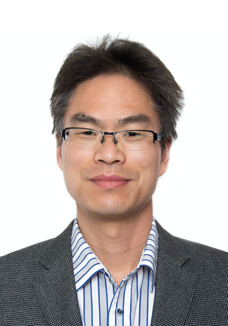
Dr. Chunfu Zhang obtained his Ph. D. degree in 2002 from Chinese Academy of Sciences (ACS). During the next two years, he became Assistant Professor/Associate Professor in Shanghai Institute of Applied Physics, CAS. At the end of 2004, he moved to Germany and joined Professor Fabian Kiessling group in German Cancer Research Center (DKFZ) as a guest scientist. In June 2007, he moved to USA and conducted research in Professor Jinming Gao group in UT Southwestern Medical Center. He joined the Med-X Research Institute, Shanghai Jiao Tong University in 2008. Currently he is Professor in School of Biomedical Engineering, SJTU. He has published two book chapters and 55 peer-reviewed papers, including Cancer Research, Biomaterials, Radiology, Advanced Functional Materials, ACS Nano and Nanoscale.
Research interests:
(1) Design and prepare multifunctional nano probes for image-guided cancer therapy. The imaging modalities include nuclear imaging, MRI, fluorescent imaging, photoacoustic imaging or combinations of them. The therapeutic modalities include chemo, photothermal, radiation, photodynamic therapies or combinations of them.
(2) Multifunctional nanoprobes for stem cell tracking.
Selected publications:
1. Lu Zhang, Huilan Su, Jiali Cai, Dengfeng Cheng, Yongjie Ma, Jianping Zhang, Chuanqing Zhou, Shiyuan Liu, Hongcheng Shi, Yingjian Zhang, and Chunfu Zhang*. A Multifunctional Platform for Tumor Angiogenesis-Targeted Chemo-Thermal Therapy Using Polydopamine-Coated Gold Nanorods. ACS Nano 2016, 10, 10404−10417.
2. Yi Yang, Lu Zhang, Jiali Cai, Xiao Li, Dengfeng Cheng, Huilan Su, Jianping Zhang, Shiyuan Liu, Hongcheng Shi, Yingjian Zhang, Chunfu Zhang*. Tumor Angiogenesis Targeted Radiosensitization Therapy Using Gold Nanoprobes Guided by MRI/SPECT Imaging. ACS Appl. Mater. Interfaces 2016, 8, 1718−1732.
3. Yaohui Tang, Chunfu Zhang,* Jixian Wang, Xiaojie Lin, Lu Zhang, Yi Yang, Yongting Wang, Zhijun Zhang, Jeff W. M. Bulte, and Guo-Yuan Yang*. MRI/SPECT/Fluorescent Tri-Modal Probe for Evaluating the Homing and Therapeutic Effi cacy of Transplanted Mesenchymal Stem Cells in a Rat Ischemic Stroke Model. Adv. Funct. Mater. 2015, 25, 1024–1034.
4. Q. Li, G. Tang, S. Xue, X. He, P. Miao, Y. Li, J. Wang, L. Xiong, Y. Wang, C. Zhang,* G.-Y. Yang*. Silica-coated superparamagnetic iron oxide nanoparticles targeting of EPCs in ischemic brain injury, Biomaterials, 2013, 34, 4982-4992.
5. L. Zhang, Y. Wang, Y. Tang, Z. Jiao, C. Xie, H. Zhang, P. Gu, X. Wei, G.-Y. Yang, H.Gu, C. Zhang*. High MRI performance fluorescent mesoporous silica-coatedmagnetic nanoparticles for tracking neural progenitor cells in an ischemic mouse model. Nanoscale, 2013, 5, 4506–4516.
Emal:cfzhang@sjtu.edu.cn
phone:+86-021-62933323
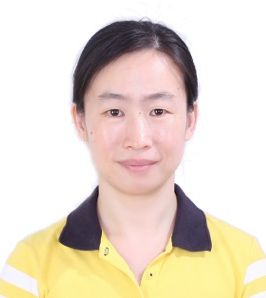
Dr. Pu-Ming Zhang received her bachelor's degree of Automation in Industry from Zhejiang University in 1997, and Ph.D. degree of Control Science and Engineering from Zhejiang University in 2002. She conducted post-doctoral research at Shanghai Jiao Tong University (2002-2003) before joining Department of Biomedical Engineering, SJTU in 2004 as an Associate Professor. Dr. Zhang is supported by many research agencies including the NSFC.
E-mail: pmzhang@sjtu.edu.cn
Tel : 86-21-34204015
Website : nip.sjtu.edu.cn
Research Interests:
Neural Information Processing: Epileptiform discharges in key brain regions in vitro and in vivo, and clinical data analysis
Selected Publications:
(1) Li YH, Li JJ, Lu QC, Gong HQ, Liang PJ, Zhang PM*. Involvement of thalamus in initiation of epileptic seizures induced by pilocarpine in mice. Neural Plasticity. 2014, doi:10.1155/2014/675128.
(2) Li JJ, Li YH, Gong HQ, Liang PJ, Zhang PM*, Lu QC*. The spatiotemporal dynamics of phase synchronization during epileptogenesis in amygdala-kindling mice. PLoS One, 2016, 11(4): e0153897.
(3) Mao JW, Ye XL, Li YH, Liang PJ, Xu JW*, Zhang PM*. Dynamic network connectivity analysis to identify the epileptogenic zones based on stereo-electroencephalography. Frontiers in Computational Neuroscience, 2016, 10:113.
(4) Li YH, Ye XL, Liu QQ, Mao JW, Liang PJ, Xu JW, Zhang PM*. Localization of epileptogenic zone based on graph analysis of stereo-EEG. Epilepsy Research, 2016,128: 149-157.
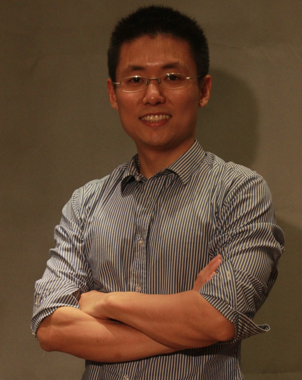
Shiyi Zhang
School of Biomedical Engineering
Shanghai Jiao Tong University
Dr. Shiyi Zhang has been an assistant professor in the School of Biomedical Engineering at the Shanghai Jiao Tong University since 2016. He obtained his bachelor’s degree from Peking University in Beijing in 2008. After then, he started his Ph.D. study with Prof. Karen Wooley at the Washington University in St. Louis. His PhD research interests ranged from degradable polymer for nanomedicine to the polymer self-assembly for functional nanostructures. Upon the completion of his PhD research in 2013, he arrived at MIT as a Max-Planck Postdoctoral Fellow with Prof. Robert S. Langer, focusing the translational study for gastrointestinal drug delivery. Dr. Zhang’s research appears in more than thirty-one articles in leading chemistry and polymer journals, including Nature Materials, Science Translational Medicine, Journal of the American Chemical Society, ACS Nano, Advanced Materials, Advanced Functional Materials, Macromolecules and ACS Macro Letters, and results six US and international patents. He also helped to build the biotech startup, Lyndra, to push the gastric retentive drug delivery system into clinic. Dr. Zhang received 1000 Plan Program for Young Talents in 2015.
Email: zhangshiyi@sjtu.edu.cn
Phone: +86-13120900797
Current research interests: therapeutic treatments of adverse effects caused by targeted therapies, polymeric materials for the management of blood glucose spikes after meals, synthetic small blood vessels for cardiac bypass surgery.
Selected publications:
1. Bellinger, A. M.*; Jafari, M.*; Grant, T. M.*; Zhang, S. *; Slater, H.; Wenger, E.; Mo, S.; Lee, Y-A. L.; Mazdiyasni, H.; Kogan, L.; Barman, R.; Cleveland, C.; Booth, L.; Bensel, T.; Minahan, D.; Hurowitz, H. M.; Tai, T.; Daily, J.; Nikolic, B.; Wood, L.; Eckhoff, P.; Langer, R.; Traverso, G. "Oral Ultra Long-Acting Drug Delivery: Single Encounter Ivermectin for Malaria Eradication" Sci. Transl. Med. 2016, 8, 365ra157. (* equal contribution)
2. Zhang, S.; Bellinger, A. M.; Glettig, D. L.; Barman, R.; Lee, Y.-A. L.; Zhu, J.; Cleveland, C.; Montgomery, V. A.; Gu, Li, Nash, L. D.; Maitland, D. J.; Langer, R.; Traverso G. "A pH-responsive Supramolecular Polymer Gel as an Enteric Elastomer for Use in Gastric Devices" Nat. Mater., 2015, 14, 1065.
3. Zhang, S.*; Zou, J.*; Elsabahy M.; Karwa, A.; Li, A.; Moore, D. A.; Dorshow, R. B.; Wooley, K. L. "Poly(ethylene oxide)-block-polyphosphester-based Paclitaxel Conjugates as a Platform for Ultra-high Paclitaxel-loaded Multifunctional Nanoparticles", Chem. Sci., 2013, 4, 2122. (* equal contribution)
4. Zhang, S.; Zou, J.; Zhang, F.; Elsabahy M.; Felder, S.; Zhu, J.; Pochan, D. J.; Wooley, K. L. "Rapid and Versatile Construction of Diverse and Functional Nanostructures Derived from a Polyphosphoester-based Biomimetic Block Copolymer System", J. Am. Chem. Soc., 2012, 134, 18467.
5. Zhang, S.; Li, Z.; Samarajeewa, S.; Sun, G.; Yang, C.; Wooley, K. L. "Orthogonally Dual Clickable Janus Nanoparticles via a Cyclic Templating Strategy", J. Am. Chem. Soc., 2011, 133, 11046.

Dr. Yan Zhang received M.D. degree from Shandong Medical University in 1999, Ph.D. degree from Shandong University in 2005 and conducted post-doctoral research at NYU from 2005 to 2007, at Weill Cornell Medical College from 2007 to 2012. She now is the Professor of Special Appointment at Shanghai Jiaotong University. She studied on the differentiation and polarization of tumor-associated immune cells, find out the abnormal immune cells in patients with tumors and figure out the molecular mechanism on their formation. Since 2005, she has published 14 SCI papers, which has a total SCI score of more than 100. Now she undertakes two grants from NSFC and one grant from SJTU.
Email: yanzh@sjtu.edu.cn
Phone: +86-21-68383919
Research interests:
(1) Explore the mechanism on the abnormal differentiation and polarization of tumor-associated immune cells
(2) Find out the effects of biomaterials and nanoparticles on the differentiation and polarization of tumor-associated immune cells.
Selected publications:
(1) Zhang Y#, Luo Y#, Qin SL, Mu YF, Yu MH, Zhong M. The Clinical impact of ICOS signal in colorectal cancer patients. Oncoimmunology, 2016, 5(5): e1141857 (#, co-first author)
(2) Zhang QF, Qin JL, Zhong L, Gong L, Zhang B, Zhang Y* and Gao WQ*. CCL5-Mediated Th2 Immune Polarization Promotes Metastasis in Luminal Breast Cancer. Cancer Research. 2015, 75(20):4312-4321 (*, co-corresponding authors)
(3) Zhang Y, Lv D, Kim HJ, Kurt RA, Bu W, Li Y and Ma X. A Novel Role of Hematopoietic CCL5 in Promoting Triple-negative Mammary Tumor Progression by Regulating Generation of Myeloid-derived Suppressor Cells. Cell Research, 2013, 23:(3)394-408
(4) Tang W, Lu Y, Tian QY, Zhang Y, Guo FJ, Liu GY and Liu CJ. The Growth Factor Progrannulin Binds to TNF Receptor and Is Therapeutic Against Inflammatory Arthritis in Mice. Science. 2011;332:(6028)478-484
(5) Zhang Y and Ma X. Triptolide inhibits IL-12/IL-23 expression in APCs via CCAAT/enhancer-bingding protein alpha. J Immunol. 2010;184:(7)3866-3877
(6) Zhang Y, Kim HJ, Yamamoto S, Kang X and Ma X. Regulation of interleukin-10 gene expression in macrophages engulfing apoptotic cells (Review). J Interferon Cytokine Res. 2010;30:(3)113-122
(7) Zhang Y, Kong Li, Carlson CS and Liu CJ. Cbfa1-dependent expression of an interferon-inducible p204 protein is required for chondrocyte differentiation. Cell Death Differ. 2008;15:(11)1760-1771
(8) Zhang Y, Howell RD, Alfonso DT, Yu J, Kong L, Wittig JC and Liu CJ. IFI16 inhibits tumorigenicity and cell proliferation of bone and cartilage tumor cells. Front Biosci. 2007;12:(4)4855-4863
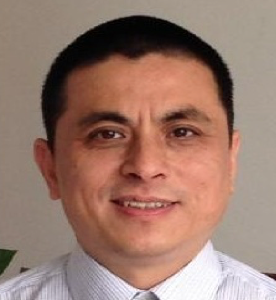
Dr. Jun Zhao received his Ph.D. in Biomedical Engineering from Shanghai Jiao Tong University, Shanghai, China in 2006. Dr. Zhao is a full Professor and the Associate Dean of School of Biomedical Engineering at Shanghai Jiao Tong University. He was a visit scholar at University of Iowa, USA, in 2006-2007.
His research interests include CT reconstruction, medical imaging, medical image processing, computer-aided detection and medical applications of synchrotron radiation. Dr. Zhao received over 10 grants from Ministry of Science and Technology of China, National Science Foundation of China (NSFC), Science and Technology Commission, Education Commission of Shanghai Municipality, GE and etc. He with his coauthors published over 100 journal articles and conference papers, including the first paper on exact triple-source cone-beam CT, the first paper on virtual eversion of colon. He has over 20 patents. He is recognized by a number of awards for academic and educational achievements. He serves as an associate editor for Computer Methods in Biomechanics and Biomedical Engineering: Imaging & Visualization, and International Journal of Biomedical Imaging. He is also active in the international research groups of, IEEE EMBC, SPIE and ISBI.
Email: junzhao@sjtu.edu.cn
Phone: +86-21-34204479
Research interests:
(1) CT reconstruction, MRI reconstruction, medical imaging.
(2) Computer-aided detection for lesions (lung nodules, colon polyps), medical image processing and analysis.
(3) Medical applications of synchrotron radiation.
Selected publications:
(1) Xi Y, Chen Y, Tang R, Sun J, Zhao J*, United iterative reconstruction for spectral computed tomography, IEEE Trans. Medical Imaging, Vol.34,769-778, 2015.
(2) Song Y, Zhu Z, Zhao J*, Reconstruction of magnetic resonance imaging by dual-dictionary learning, Magnetic Resonance in Medicine, 71(3):1285-1298 2014.
(3) Xi, Yan, and Jun Zhao*. "Inner-focusing reconstruction method for grating-based phase-contrast CT." Optics Express, 21.5 (2013): 6224-6232.
(4) Lu Y, Zhao J*, and Wang G, Few-view image reconstruction with dual dictionaries, Phys. Med. Biol., 2012; 57:173-189
(5) Zhang D, Zhao J*, Lu L, Li L, and Wang Z, Virtual eversion and rotation of colon based on outer surface centerline, Medical Physics, 2010; 37:5518-5529
(6) Xi Y, Rong T, Wang Y, and Zhao J*, Microbubbles as agent for in-line x-ray phase-contrast imaging, Applied Physics Letter, 2011; 99:011101
(7) Zhao J*, Jin Y, Lu Y, and Wang G, A filtered backprojection algorithm for triple-source helical cone-beam CT,IEEE Trans. Medical Imaging, 2010; 29:756-770
(8) Lu Y, Zhao J*, and Wang G, Exact image reconstruction with triple-source saddle-curve cone-beam scanning, Phys. Med. Biol., 2009; 54:2971-2991
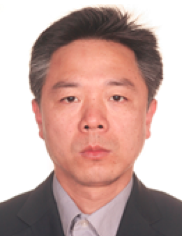
Dr. Xiaodong Zhao received the B.S. degree in 1995 and the M.S. degree in 2000 in Wuhan Institute of Virology, Chinese Academy of Science, and the Ph.D. degree in 2003 in China Centre of Disease Control and Prevention, Beijing, China. Since the end of 2003, he has been a postdoctoral fellow of Genome Institute of Singapore. In 2008, he was employed as a research associate in Cambridge Institute of Medical Research, University of Cambridge, Cambridge, UK. He joined Shanghai Jiao Tong University as the Professor of Special Appointment in 2010. He has been involved in ENCODE project with the efforts to develop and apply cutting-edge high throughput genomic technologies to explore genome function. He has authored or coauthored 32 referred papers with the citation over 5000.
Email: xiaodongzhao@sjtu.edu.cn
Phone: +86-21-34206846
Research interests:
(1) Epigenetics in stem cells To understand how epigenetic regulation contributes to specifying stem cell identity through integrative epigenetic profiling of various kinds of histone modifications and DNA methylation.
(2) Transcriptional network in tumor cells To understand how transcription factors regulate their target genes and the their implications in tumor initiation and development by using various genomics approaches.
Selected publications:
(1) Zhang XL, Wu J, Wang J, Shen T, Li H, Lu J, Gu Y, Kang Y, Wong CH, Ngan CY, Shao Z, Wu J, Zhao X*. Integrative epigenomic analysis reveals unique epigenetic signatures involved in unipotency of mouse female germline stem cells. Genome Biol. 2016;17(1):162.
(2) Lu J, Chen J, Xu N, Wu J, Kang Y, Shen T, Kong H, Ma C, Cheng M, Shao Z, Xu L, Zhao X*. Activation of AIFM2 enhances apoptosis of human lung cancer cells undergoing toxicological stress. Toxicol Lett. 2016;258:227-36.
(3) Qi Y, Ooi HS, Wu J, Chen J, Zhang X, Tan S, Yu Q, Li YY, Kang Y, Li H, Xiong Z, Zhu T, Liu B, Shao Z, Zhao X*. MALAT1 long ncRNA promotes gastric cancer metastasis by suppressing PCDH10. Oncotarget. 2016;7(11):12693-703.
(4) Lai DP, Tan S, Kang YN, Wu J, Ooi HS, Chen J, Shen TT, Qi Y, Zhang X, Guo Y, Zhu T, Liu B, Shao Z, Zhao X*. Genome-wide profiling of polyadenylation sites reveals a link between selective polyadenylation and cancer metastasis. Hum Mol Genet. 2015; 24(12): 3410-7.
(5) Qi Y, Zhang X, Kang Y, Wu J, Chen J, Li H, Guo Y, Liu B, Shao Z, Zhao X*. Genome-wide transcriptional profiling analysis reveals annexin A6 as a novel EZH2 target gene involving gastric cellular proliferation. Mol Biosyst. 2015; 11(7):1925-32.
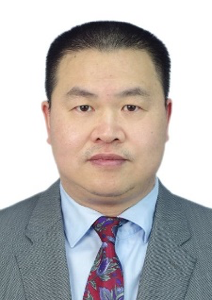
Dr. Guoyan Zheng received his B.E. degree in 1992 and M.S. degree in 1995 in Biomedical Engineering from Southern Medical University, GuangZhou, China, and Ph.D. degree in 2002 in Biomedical Engineering from the University of Bern, Bern, Switzerland. From 2003 until the end of 2018, he was with the University of Bern, first as a Post-doc (2003 – 2004), then as a group leader (2005-2018). He did his habilitation and obtained the title of Privatdozent (PD) from the University of Bern in 2010, and became an Associate Professor of the same University in 2015. Since Jan. 2019, he has been a full professor at Shanghai Jiao Tong University, Shanghai, China. He has been involved in a number of industrial and Swiss National Science Foundation projects and has authored or coauthored 215 referred journal and conference papers, edited 3 books, and awarded 8 patents. Dr. Zheng has received a number of awards including 2009 Ypsomed Innovation Prize for Research and Development and the Best Basic Science Paper published in the Journal of Laryngology and Otology in 2012. He is an Associated Editor for IEEE Transactions on Biomedical Engineering as well as for IEEE Journal of Biomedical and Health Informatics, a member of Board of Directors of International Society of Medical Image Computing and Computer Assisted Interventions.
Email: guoyan.zheng@sjtu.edu.cn
Phone: +86-130-6273-0961
Research interests:
(1) Computer assisted interventions and medical robotics, with a focus on computer assisted orthopaedic interventions.
(2) Medical image computing based on machine learning and deep learning, including medical image segmentation, image registration and image synthesis.
(3) Computational anatomy, with a focus on the development and application of mathematical, statistical and data-analytical methods for modelling of anatomical shapes variability.
Selected publications:
(1) Zeng G, Zheng G*. Holistic decomposition convolution for effective semantic segmentation of medical volume images. Medical Image Analysis 2019 Jul 8;57:149-164.
(2) Li X, Dou Q, Chen H, Fu CW, Qi X, Belavý DL, Armbrecht G, Felsenberg D, Zheng G*, Heng PA*. 3D multi-scale FCN with random modality voxel dropout learning for intervertebral disc localization and segmentation from multi-modality MR images. Medical Image Analysis, 45:41-54, 2018.
(3) Zheng G*, Chu C, Belavý DL, Ibragimov B, Korez R, Vrtovec T, Hutt H, Everson R, Meakin J, Andrade IL, Glocker B, Chen H, Dou Q, Heng PA, Wang C, Forsberg D, Neubert A, Fripp J, Urschler M, Stern D, Wimmer M, Novikov AA, Cheng H, Armbrecht G, Felsenberg D, Li S*. Evaluation and comparison of 3D intervertebral disc localization and segmentation methods for 3D T2 MR data: a grand challenge. Medical Image Analysis, 35:327-344, 2017
(4) Chu C, Bai J, Wu X, Zheng G*. Multi-Atlas Segmentation Constrained Graph Method for Accurate Segmentation of Hip CT Images. Medical Image Analysis, 26:173-184, 2015
(5) Chen C, Belavy D, Yu W, Chu C, Armbrecht G, Bansmann M, Felsenberg D, Zheng G*. Localization and segmentation of 3D intervertebral discs in MR images by data driven estimation. IEEE Transactions on Medical Imaging, 34:1719-1729, 2015.

Dr. Chuanqing Zhou, received his Ph.D. degree in Biomedical Engineering from Shanghai Jiao Tong University in 2007. Currently he is the Associate Professor of Shanghai Jiao Tong University School of Biomedical Engineering. He has been mainly engaged in the studies of biomedical optical imaging, novel ophthalmic technologies and instrumentations. He has published more than 60 papers in the peer reviewed journals and 2 book chapters, and held 6 patents in the field of optical imaging and ophthalmology. He has developed and industrialized several ophthalmic instruments, including slit-lamp microscope integrated optical coherence tomography, multimodal optical coherence tomography, and multi-wavelength laser retinal coagulator. In the past 5 years, he has been the PIs and key investigators of 12 research projects supported by National Science Foundation of China (NSFC), Ministry of Science and Technology (MOST), Ministry of Education (MOE), and Science and Technology Commission of Shanghai Municipality (STCSM), respectively.
Email: zhoucq@sjtu.edu.cn
Phone: +86-21-34204080
Research interests:
(1) Multimodal imaging of optical coherence tomography, photoacoustic microscopy, and confocal fluorescent imaging
(2) Applications of multimodal imaging and laser treatment in eye diseases
(3) Development of novel ophthalmic instruments
Selected publications:
(1) Li Q, Li L, Yu T, Zhao Q, Zhou C*, Chai X*. Vascular tree extraction for photoacoustic microscopy and imaging of cat primary visual cortex. Journal of Biophotonics. 2017; 10: 780-791
(2) Li L, Dai C, Li Q, Zhao Q, Jiang X, Chai X*, Zhou C*. Fast subcellular optical coherence photoacoustic microscopy for pigment cell imaging. Optics Letters. 2015; 40(19): 4448-4451
(3) Fan S, Li L, Li Q, Dai C, Ren Q, Jiao S*, Zhou C*. Dual band dual focus optical coherence tomography for imaging the whole eye segment. Biomedical Optics Express. 2015; 6(7): 2481-2493
(4) Han Z, Tao C, Zhou D, Sun Y, Zhou C*, Ren Q, Roberts C. Air puff induced corneal vibration: theoretical simulations and clinical observations. Journal of Refractive Surgery. 2014; 30(3): 208-213
(5) Luo T, Huang P, Gao G, Shen G, Fu S, Cui D, Zhou C*, and Ren Q*. Mesoporous silica-coated gold nanorods with embedded indocyanine green for dual mode X-ray CT and NIR fluorescence imaging. Optics Express. 2011; 19: 17030-17039

Dr. Dan Czajkowsky received his B.Sc. in Physics in 1992 from the University of Alberta, Canada and his Ph.D. in Biophysics in 2000 from the University of Virginia, USA. From 2000 to 2009, he was a Research Associate at the University of Virginia and then arrived in China in 2010 as a Young International Scientist Fellow at the Chinese Academy of Sciences, working with Dr. Jun Hu at the Shanghai Institute of Physical Biology, where he remained until 2012. In 2013, he joined the School of Biomedical Engineering at the Shanghai Jiao Tong University where he is now a Professor. He has authored 68 publications and 4 patents.
Email: dczaj@sjtu.edu.cn
Phone: +86-21-34206632
Research interests:
(1) Bacterial pore-forming toxins: their pore-forming mechanism, strategies by which they can be inhibited for therapy, and their development in biomedical applications
(2) The mechanism by which IgM activates complement C1q and the development of polymeric Fc-fusions for therapy.
(3) The structural principles underlying interphase and metaphase 3D chromosomal architecture using super-resolution optical microscopy and sequencing-based approaches.
(4) Development of novel single-molecule based instrumentation, including a cryogenic AFM specifically for biological samples and a multiplex magnetic tweezers device for mechanical phenotyping of cells
Selected publications:
(1) Meng, Y., Yi, X., Li, X., Hu, C., Wang, J., Bai, L., Czajkowsky, D.M.* and Shao, Z*. The non-coding RNA composition of the mitotic chromosome by 5’-tag sequencing. Nucleic Acids Research 44, 4934-4946 (2016) (*Co-corresponding author).
(2) Czajkowsky, D.M., Sun, J., Shen, Y., and Shao, Z. Single molecule compression reveals intra-protein forces drive cytotoxin pore formation. eLife e08421 (2015).
(3) Yang, L., Czajkowsky, D.M.*, Sun, J., Hu, J., and Shao, Z*. Anomalous nanoscale surface fatigue in a layered material. Advanced Materials 26, 6478-6482 (2014). (*Co-corresponding author)
(4) Czajkowsky, D.M.*, Li, L.*, Sun, J., Hu, J., and Shao, Z. Critical role of proton “fingers” and subsurface atoms in determining adsorbed protein orientation ACS Nano 6, 190-198 (2012). (*Co-first author)
(5) Czajkowsky, D. M. and Shao, Z. The human IgM pentamer is a mushroom-shaped molecule with a flexural bias. Proceedings of National Academy of Sciences USA 106, 14960-14965 (2009).